The spectacular World's Fair Exposition Universelle in rare pictures, 1899
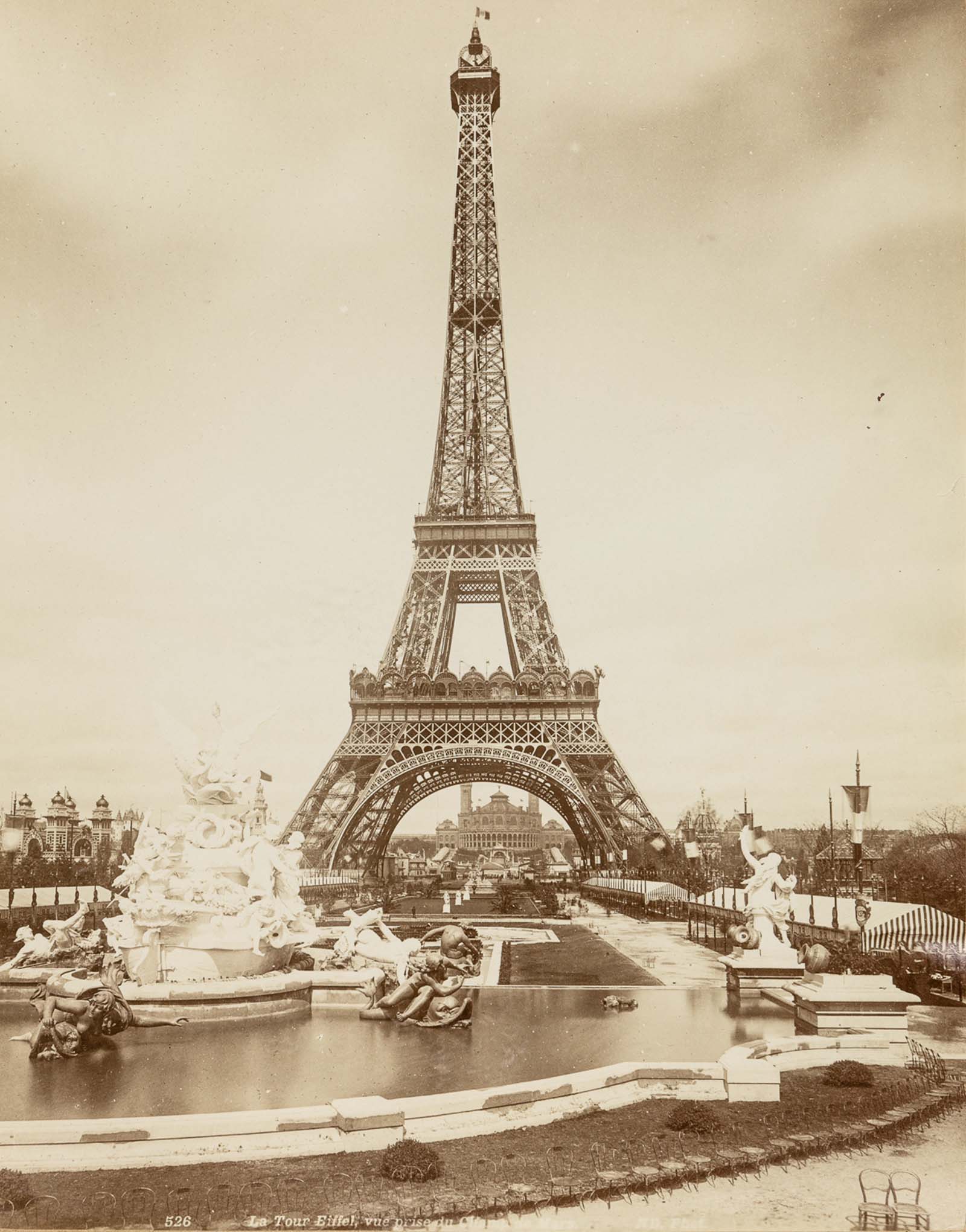
The Eiffel Tower viewed from the Champ du Mars.
The 1889 World Fair in Paris was symbolically important, since the year 1889 marked the hundredth anniversary of the French Revolution, and the Fair was announced as a celebration of the event. It attracted more than thirty-two million visitors. The most famous structure created for the Exposition, and still remaining, is the Eiffel Tower.
The 1889 Paris Exposition Universelle covered a total area of 0.96 km2, including the Champ de Mars, the Trocadéro, the quai d’Orsay, a part of the Seine, and the Invalides esplanade.
Transport around the Exposition was partly provided by a 3 kilometer (1.9 mi) 600 millimeter (2 ft 0 in) gauge railway by Decauville. It was claimed that the railway carried 6.342.446 visitors in just six months of operation.
The Fair had this time two sites: on the one hand, the Trocadéro and the Champ-de-Mars were housing the Fine Arts and industrial exhibits, as in 1878. On the other hand, east of the main site, the Esplanade des Invalides was housing a colonial exhibit, as well as several state-sponsored pavilions.
There was, for instance, a hygiene “palace”, a public welfare pavilion, as well as a building dedicated to social economy. The state was therefore much more visible than in the previous fair. The Invalides site also had a very successful panorama called “Le panorama de tout-Paris”, which represented the capital’s social life.

Map of the 1889 World Fair. The top image represents the Champ-de-Mars, from the Trocadéro Palace to the Galerie des machines (next to the École Militaire, which still exists today). The bottom print represents the Esplanade des Invalides, about half a mile from the Champ-de-Mars. This second site of the World Fair housed the Exposition coloniale as well as an agricultural fair.
There were twenty-two different entrances to the Exposition, around its perimeter. They were open from 8 AM until 6:00 PM for the major exhibits and palaces, and until 11:00 in the evening for the illuminated greens and restaurants.
The major ceremonial entrance was located at Les Invalides consisting of two tall pylons with colorful ornaments, like giant candelabras.
Many buildings sprang up on the Champ de Mars, starting with the Eiffel Tower. A competition for the tower was launched by the state in 1884, which Gustave Eiffel won in 1886 over more than a hundred other candidates.
Yet, the Tower was far from being unanimously praised. It was even very harshly criticized: the artists and writers of Paris protested against its erection in an official letter sent to the director of the Fair, calling it “unnecessary and monstrous.”
On the shores of the Seine River, at the feet of the tower, an exhibit on the history of human dwelling was held in which the architect Charles Garnier (famous for the Opéra Garnier, commissioned by Napoleon III) participated extensively. The main halls of the fair were next to the Eiffel Tower on the Champ-de-Mars.
The Palais des Beaux-arts and Palais des Arts Libéraux were both designed by the architect Joseph Bouvard. They stood right next to the Eiffel Tower. The two other main buildings were the Palais des expositions diverses (designed by Formigé) and the biggest building of all of them, the Galerie des machines (designed by Dutert).

The Gallery of Beaux-Arts.
The Palais des arts libéraux contained exhibits on medicine, geography, teaching and pedagogy, music instruments, and photography, among many other things. The Palais des Beaux-arts housed many Naturalist paintings, but the impressionists remained largely ignored by the organization committee.
Pre-Raphaelite painters such as Burne-Jones and Millais were also exhibited there. Behind these two buildings stood the Palais des expositions diverses , which housed exhibits of furniture, bronze casts, crystals, mosaics, clothes, and jewelry.
The Palais des Machines was the last building on the Champ-de-Mars (it faced the École militaire , which still stands today). The building was technologically innovative: its size was very impressive, all the more since it had been built with as few roof supports as possible. This was made possible thanks to new progress in structural engineering.
The Palais was made of steel and glass panels, and was about 375 feet long. One could visit the industry exhibit on the ground floor, but one could also see it from above by taking the moving platforms that were going back and forth from one end of the hall to another. These platforms (“ponts roulants”) also helped to build and dismantle the structure of the building before and after the Fair.
The 1889 Paris World Fair was financially profitable to the state. Its scale was also much bigger than the preceding Fair: the surface occupied by the event was much larger than the previous fairs, and the number of exhibitors had also risen substantially.

The exterior of the Egyptian pavilion.
The number of visitors doubled compared to 1878, and the costs of 1889 were about the same as in 1878. The state made a profit of 8 000 000 francs, and acquired substantial real-estate in the process: the Eiffel Tower and the Palais des Machines both effectively belonged to the state, and the latter was to be used again for the 1900 World Fair.
The countries which officially participated in the Exposition were Andorra, Argentina, Bolivia, Chile, Costa Rica, the Dominican Republic, Ecuador, the United States, Greece, Guatemala, Haiti, Hawaii, Honduras, India, Japan, Morocco, Mexico, Monaco, Nicaragua, Norway, Paraguay, Persia, Saint-Martin, El Salvador, Serbia, Siam, the Republic of South Africa, Switzerland, and Uruguay, The British dominions of New Zealand and Tasmania also took part.
Because of the theme of the Exposition, celebrating the overthrow of the French monarchy, nearly all European countries with monarchies officially boycotted the Exposition. The boycotting nations were Germany, Austria-Hungary, Belgium, Spain, Great Britain, Italy, the Netherlands, Portugal, Russia, and Sweden.
Nonetheless, many citizens and companies from these countries did participate, and a number of countries had their participation entirely funded by private sponsors.

The Mexican pavilion.
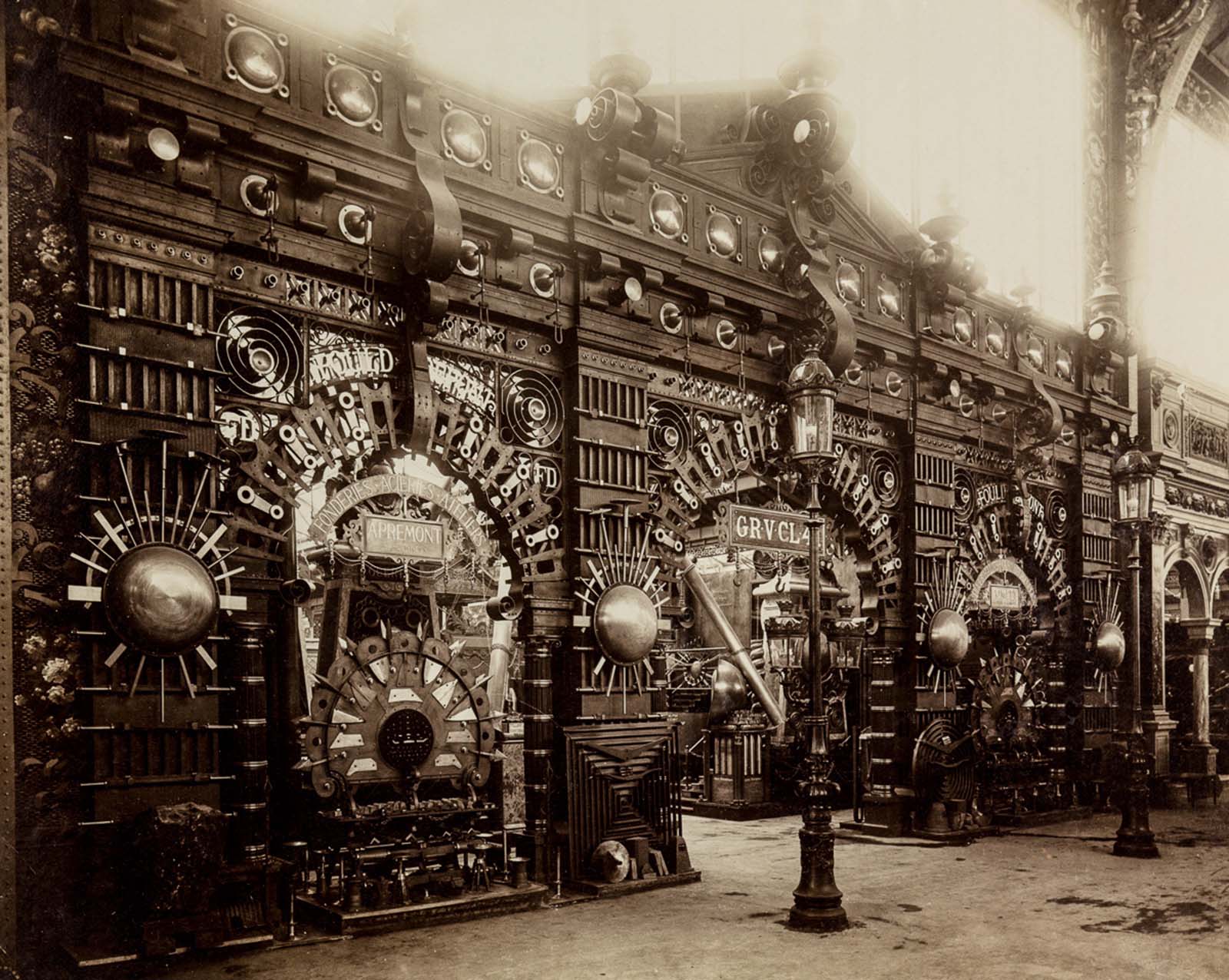
An iron and steel works exhibit.
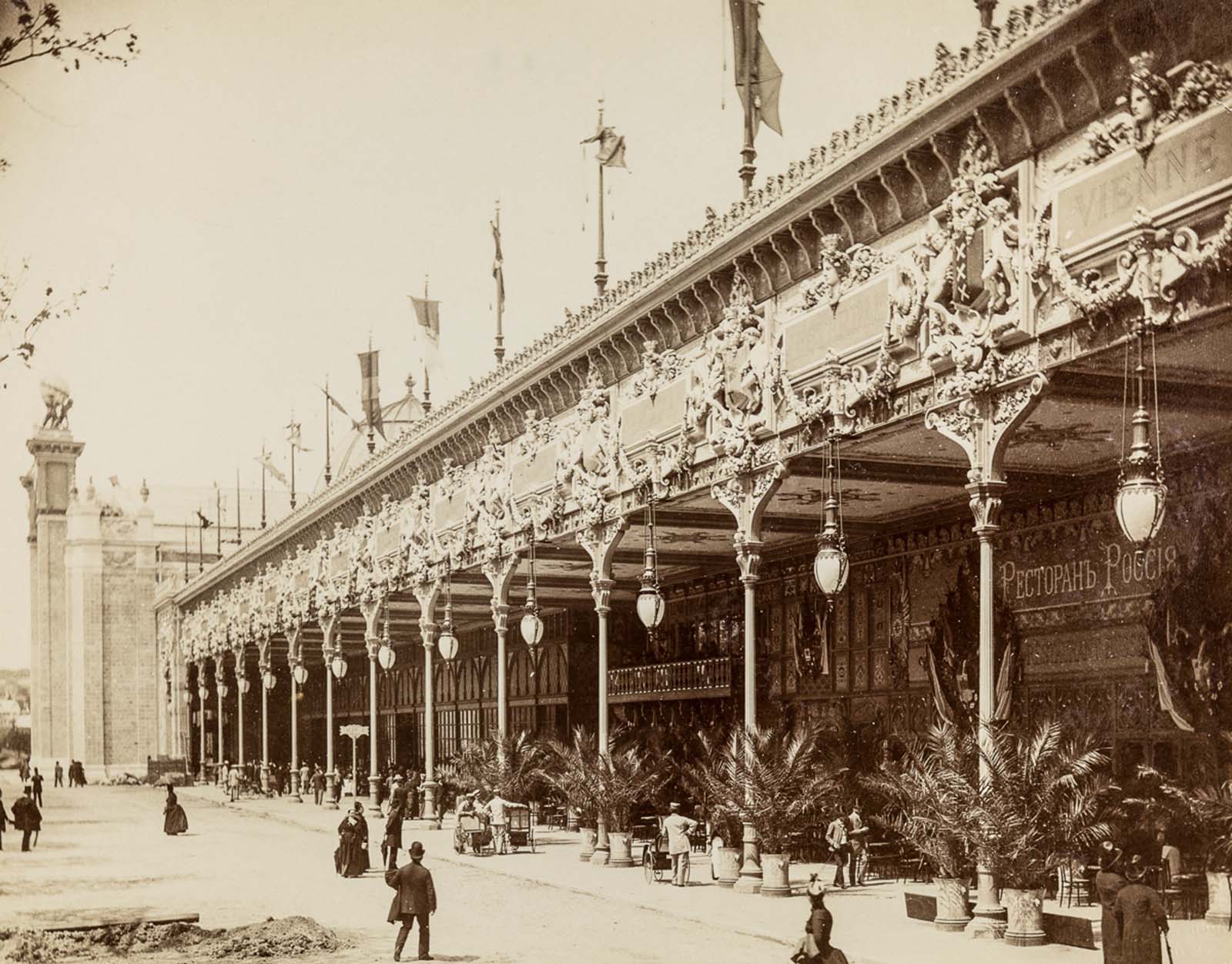
Visitors strolling between exhibitions.

Paris Exposition, view from ground level of the Eiffel tower with Parisians promenading, 1889.

La Galerie des Machines. 1899.

The Dome of Beaux-Arts.

The pavilion of Great Britain.

The pavilion of Paraguay.

Visitors stroll through north African exhibits.
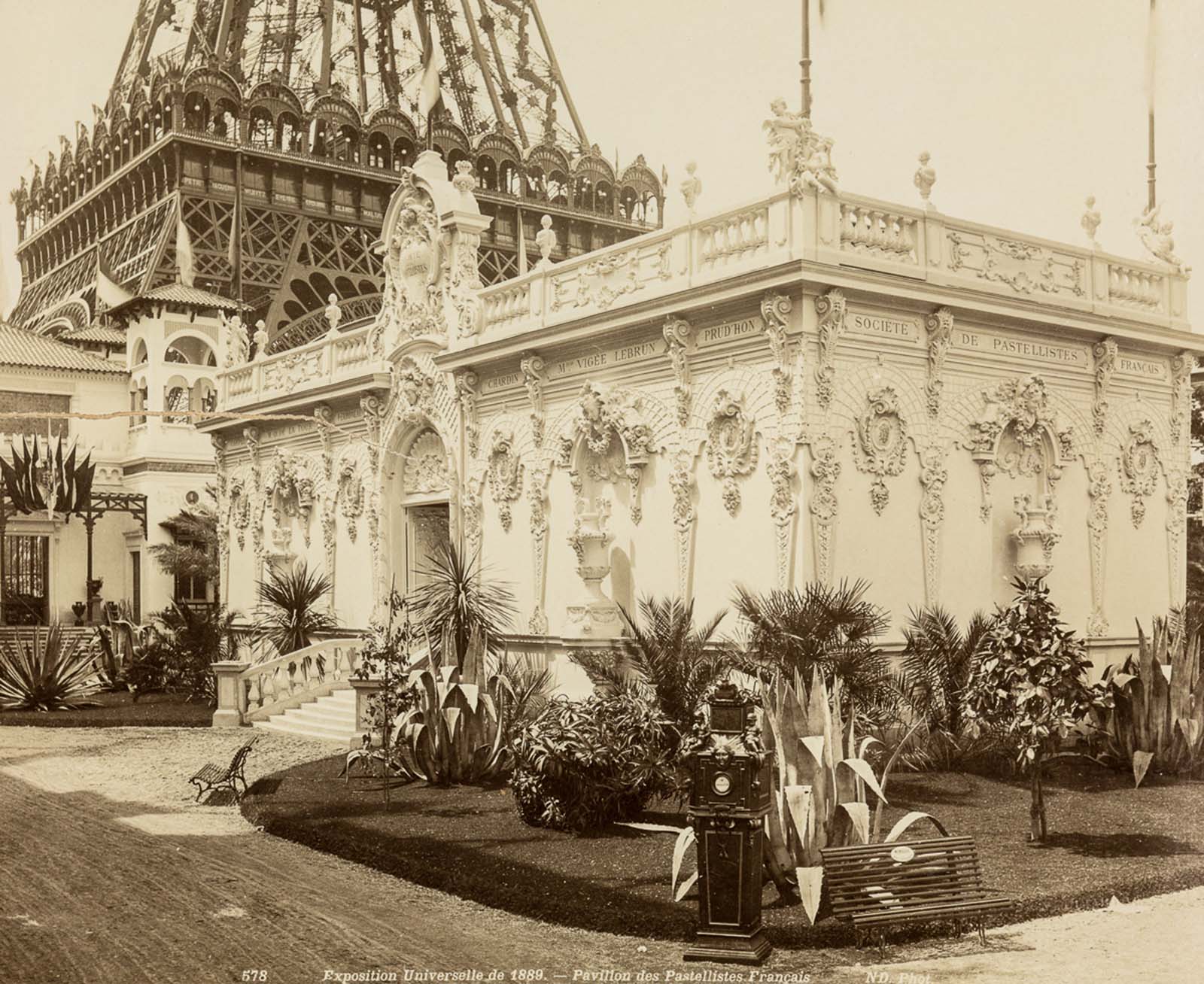
The pavilion of French Pastellists.
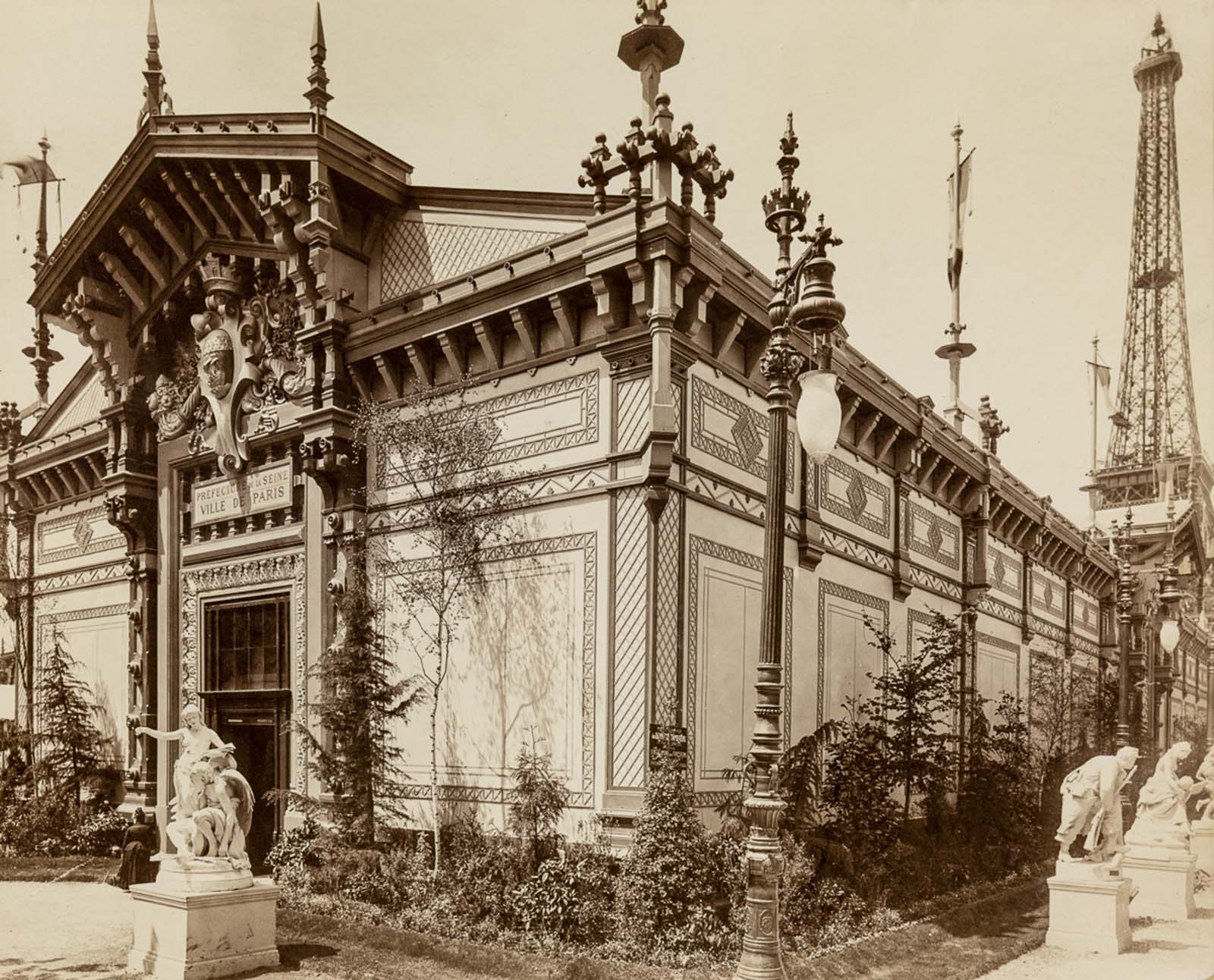
The Prefecture of the Seine exhibit, with the Eiffel Tower in the background.
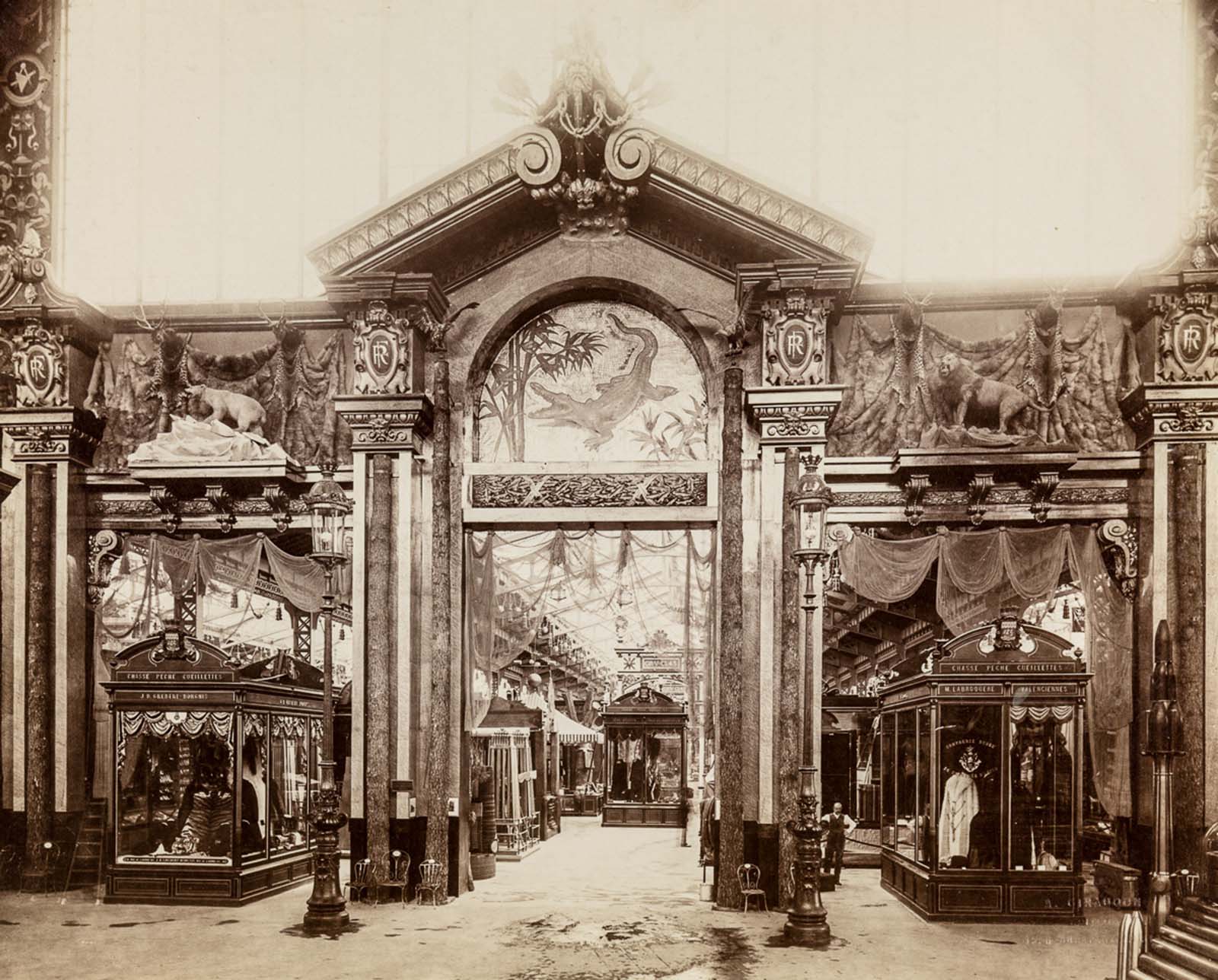
Foraging and hunting exhibits.

The Central Dome of the exhibition.
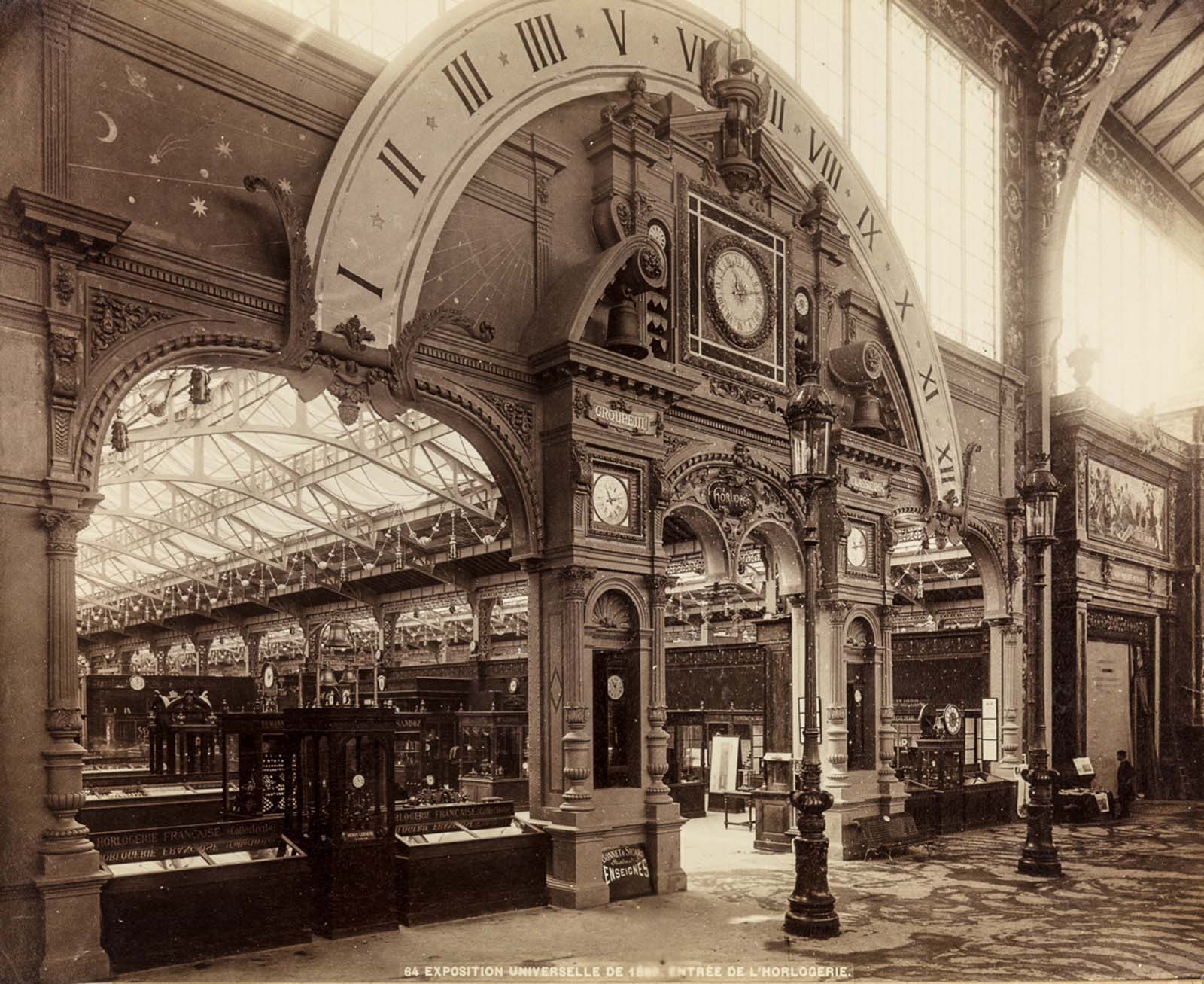
The entrance to the horology exhibition.
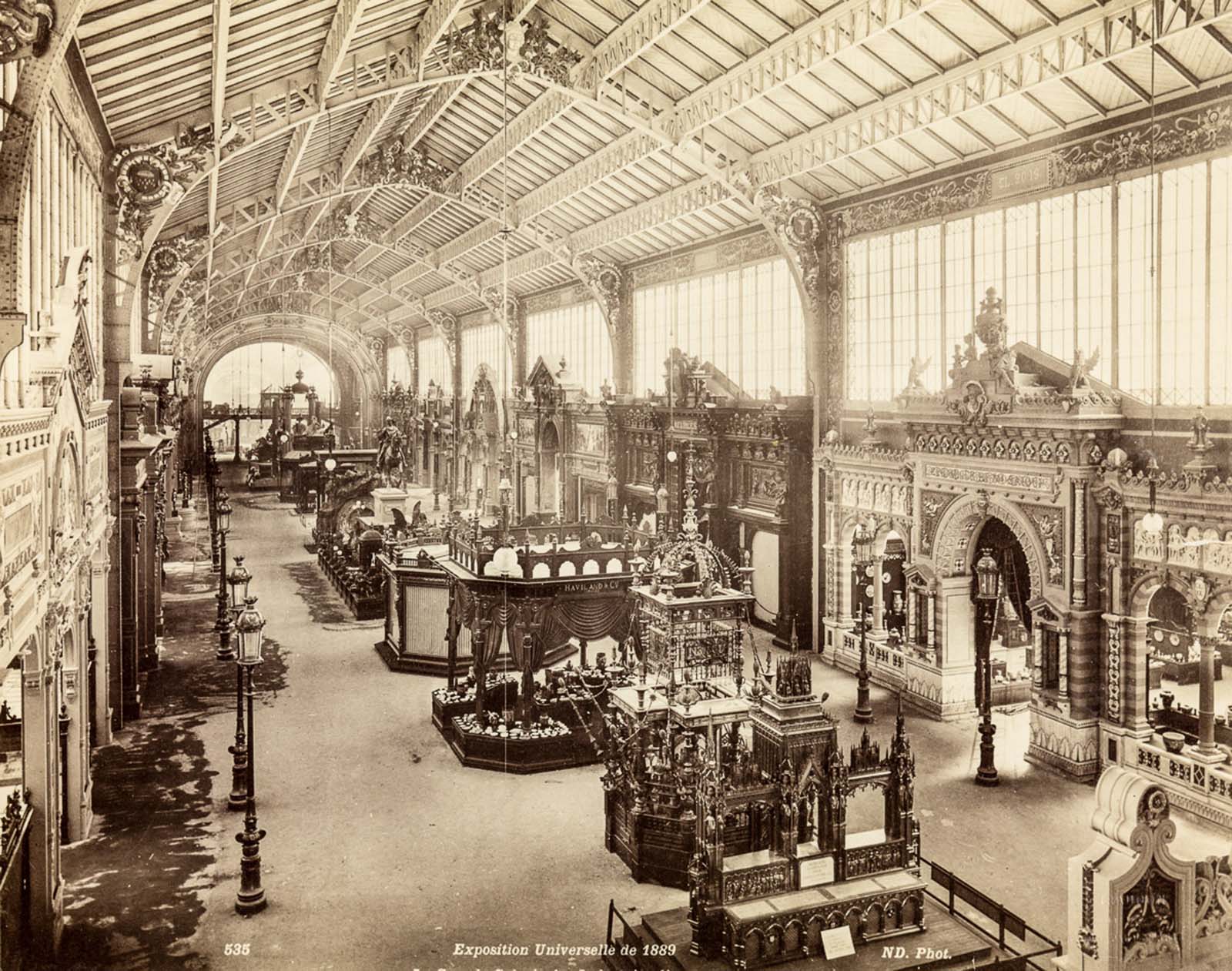
The Grand Gallery of the various industries.

The jewelry exhibition.

The pavilion of goldsmithery.
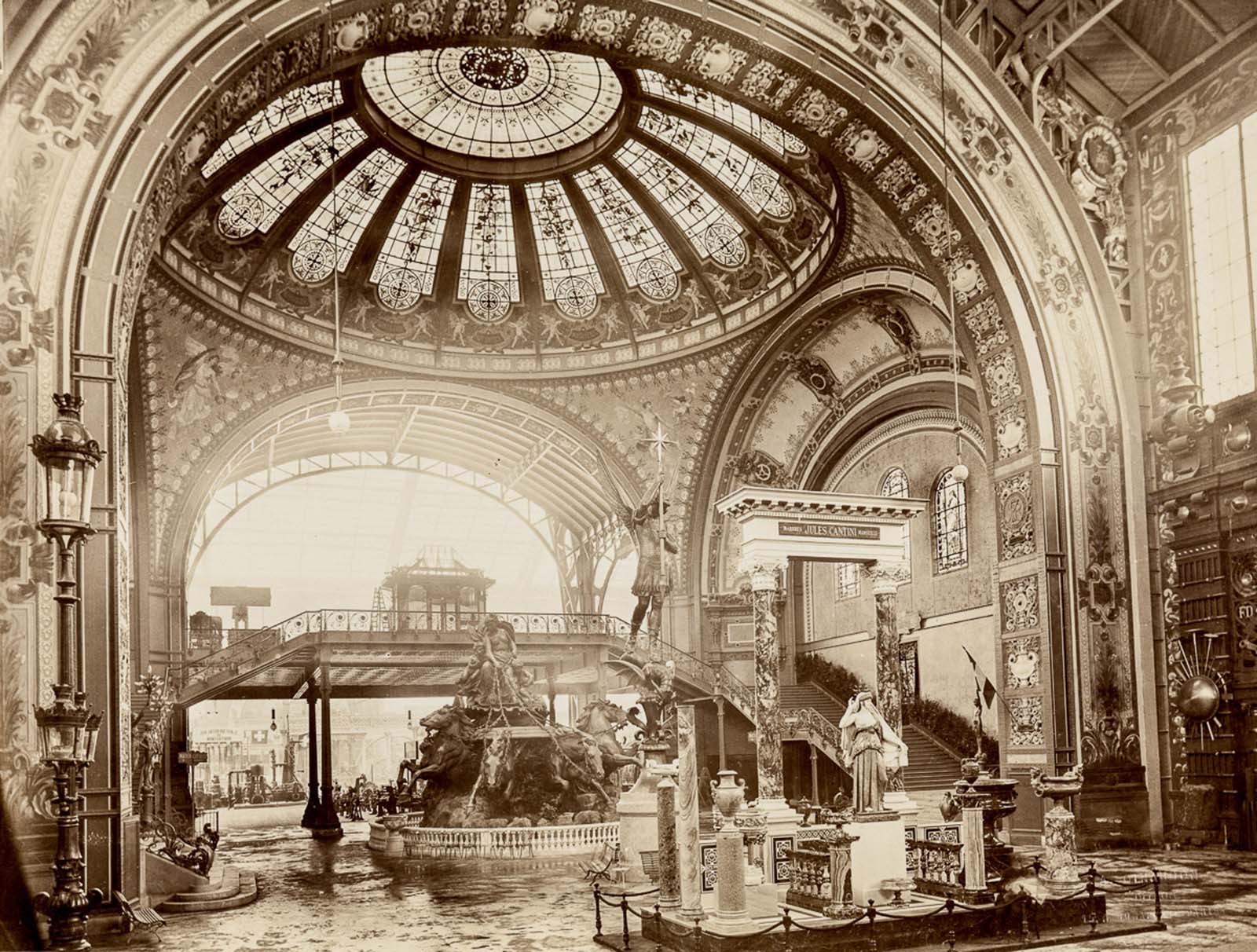
An exhibition of marble sculptures by Jules Cantini.

The entrance to the furniture exhibition.
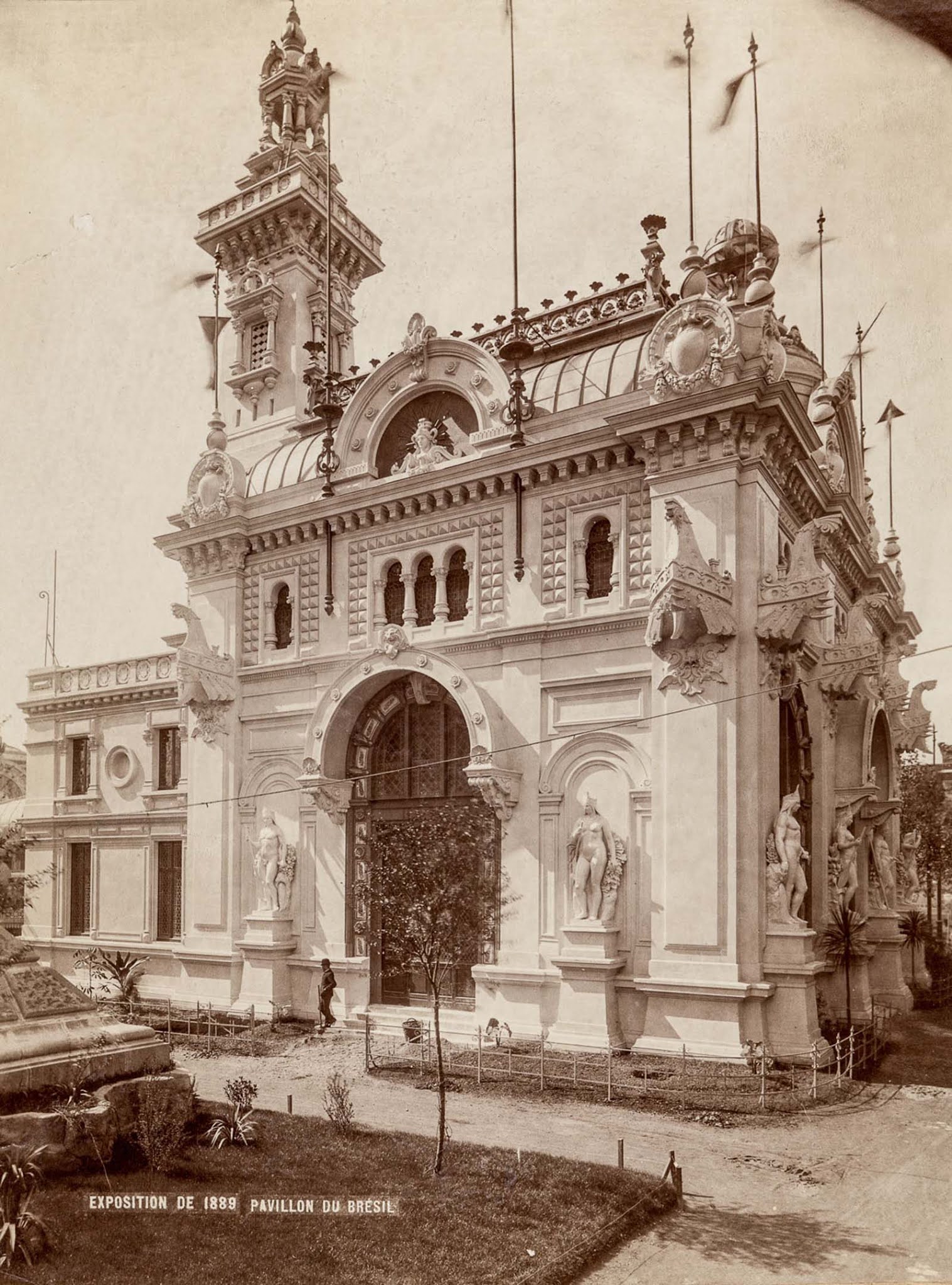
The pavilion of Brazil.
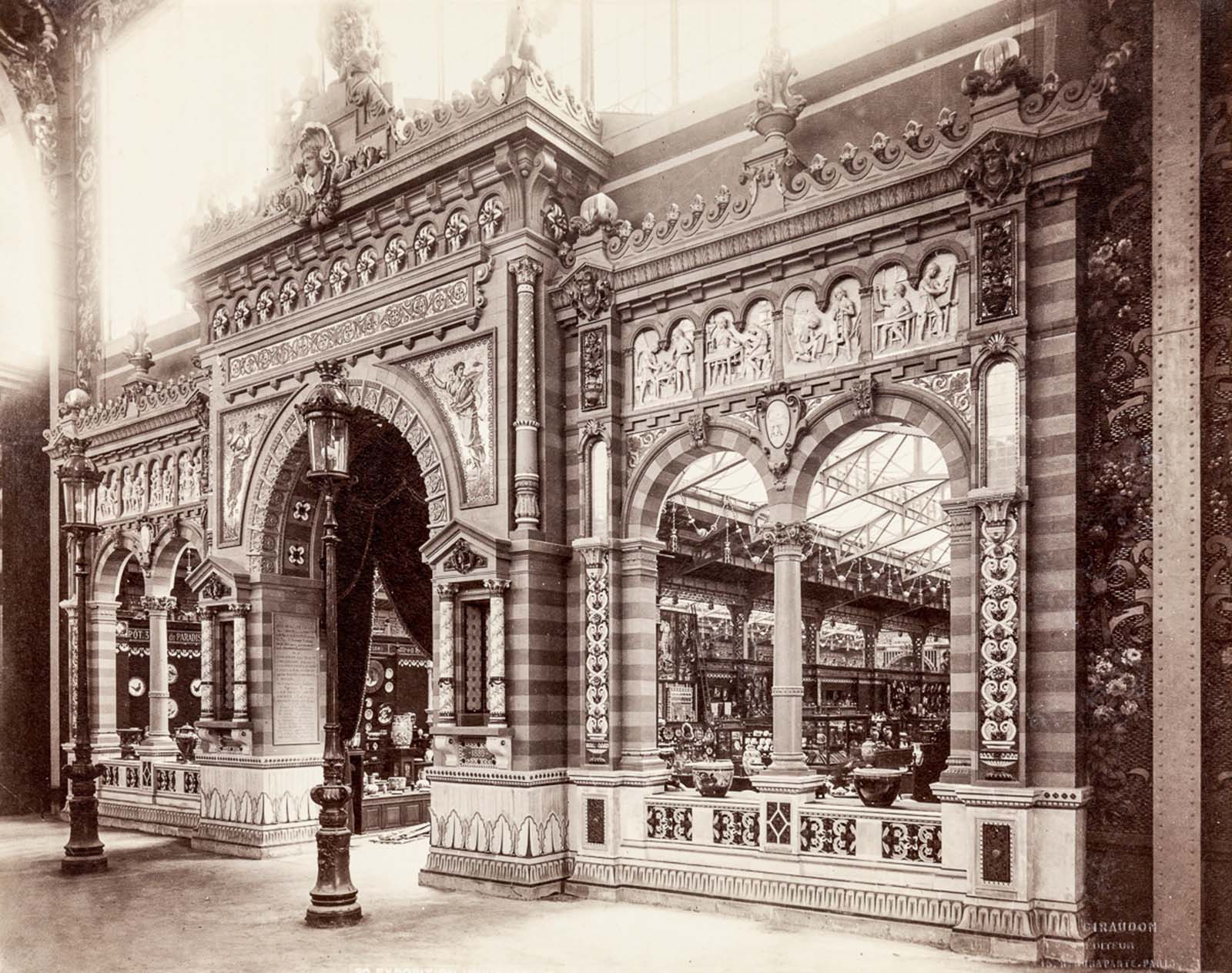
The entrance to the ceramics exhibition.
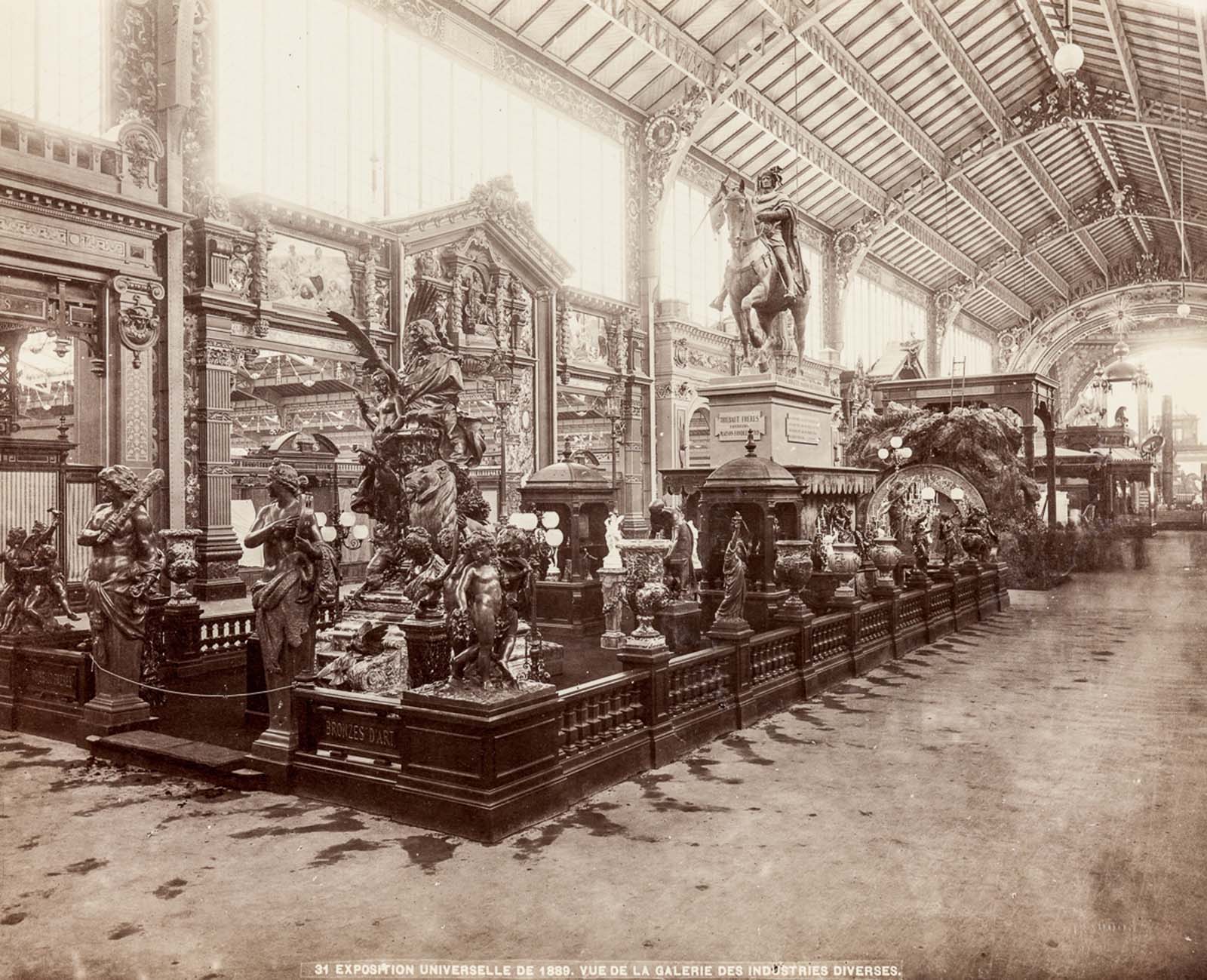
The gate for an exhibition of woolen fabrics.

The palace of India.

The Austria-Hungary exhibition.
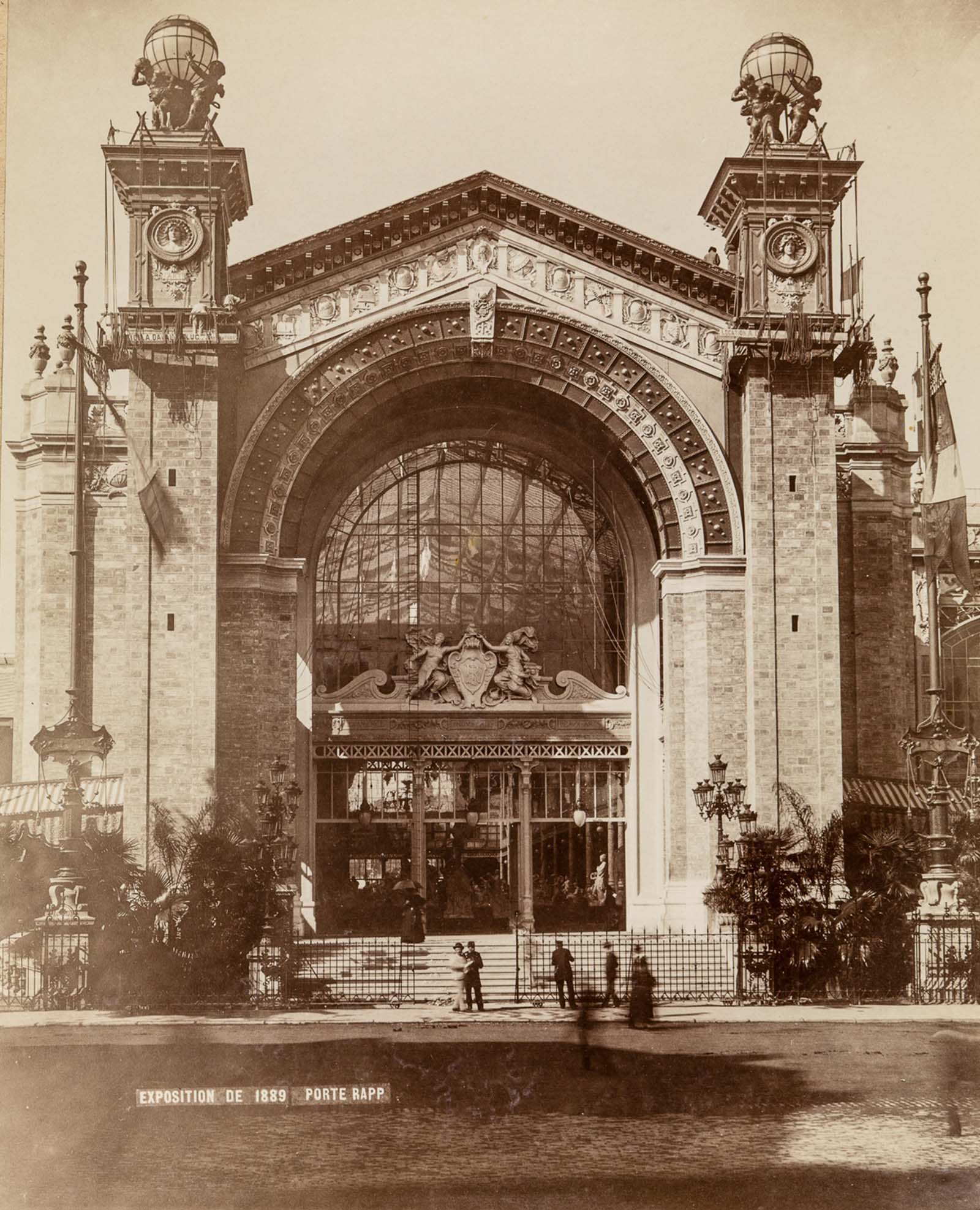
The entrance to an exhibition hall.

The entrance to an exhibition of French pastellists.
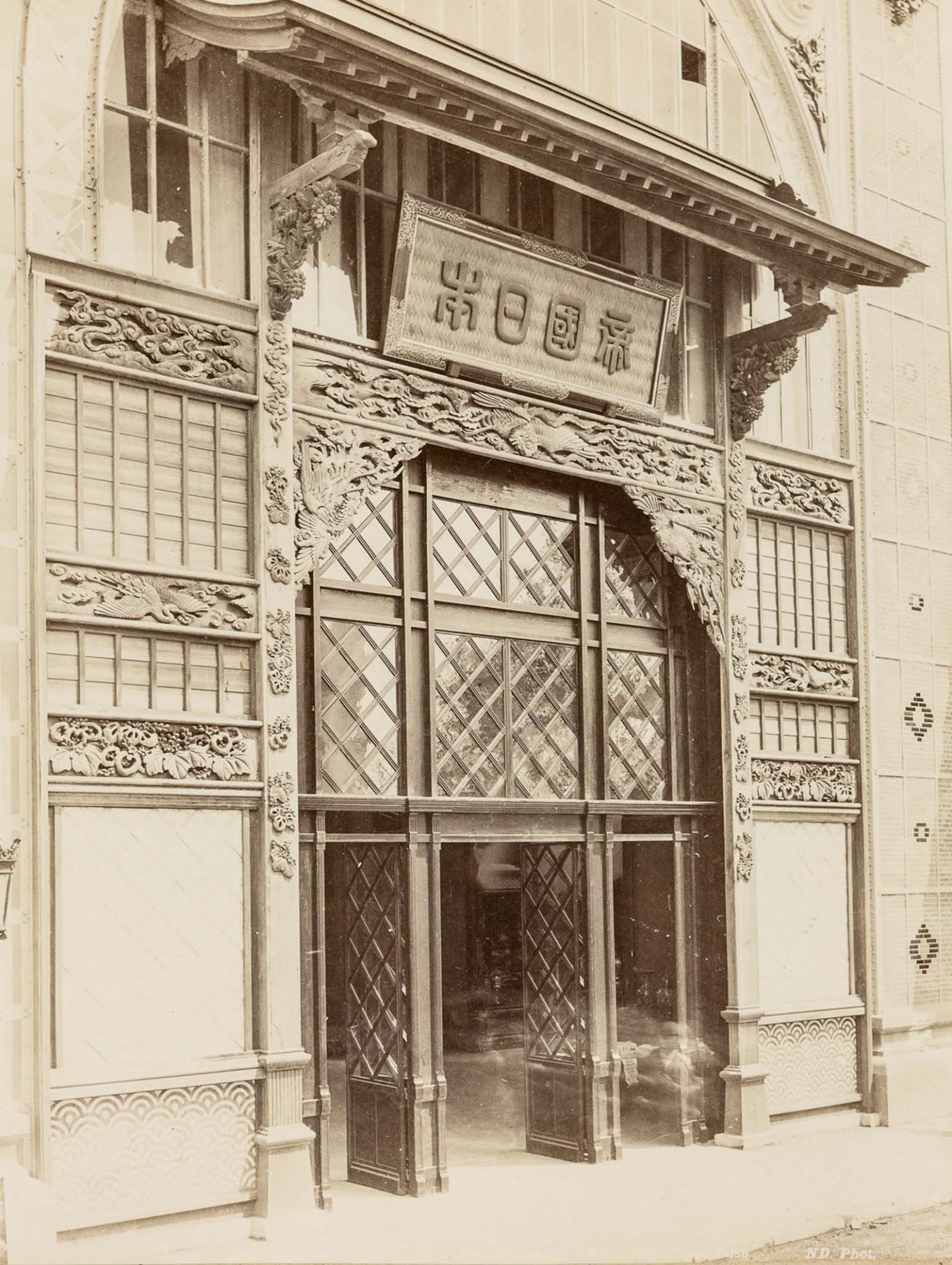
The Japanese pavilion.
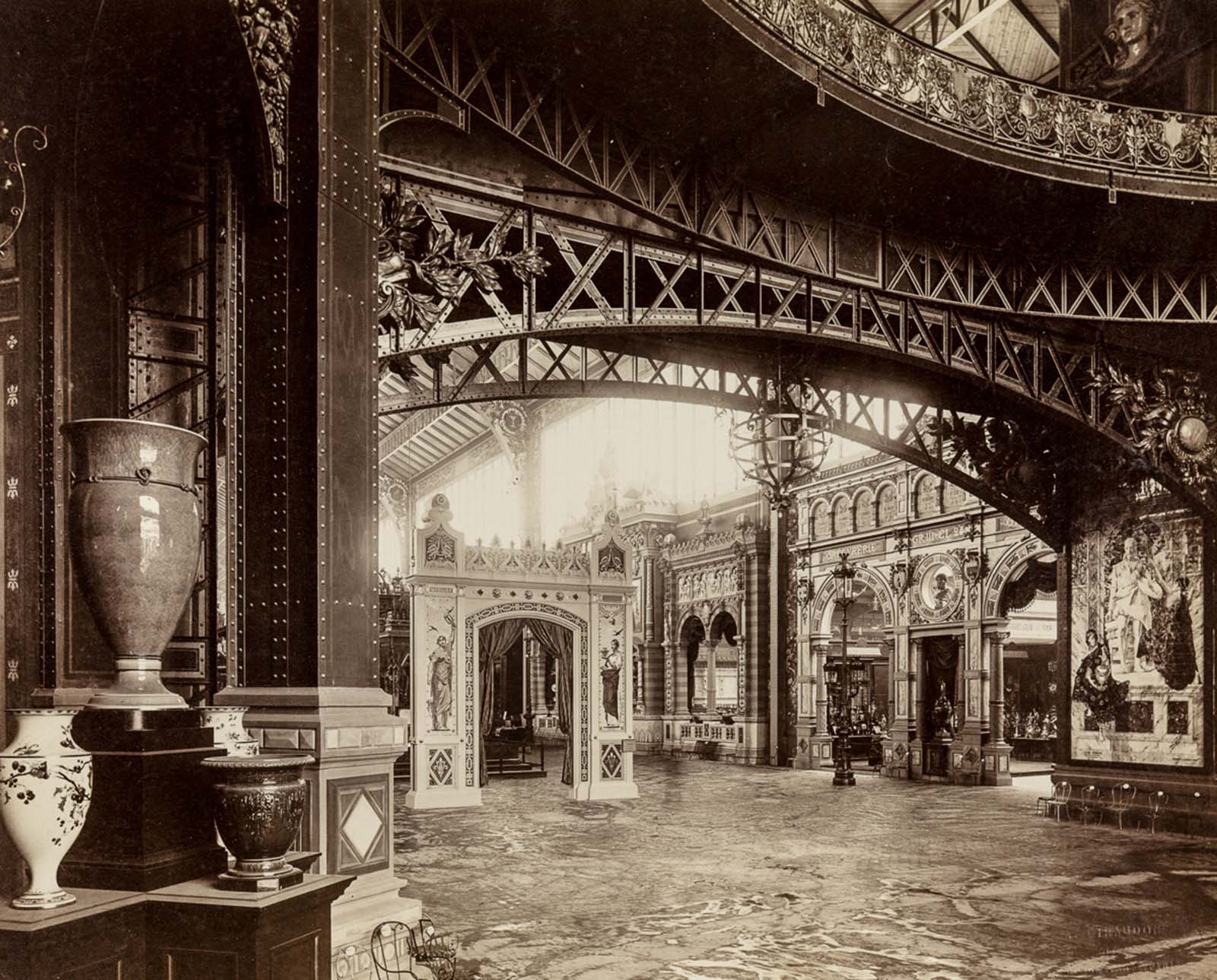
The interior of a pavilion.
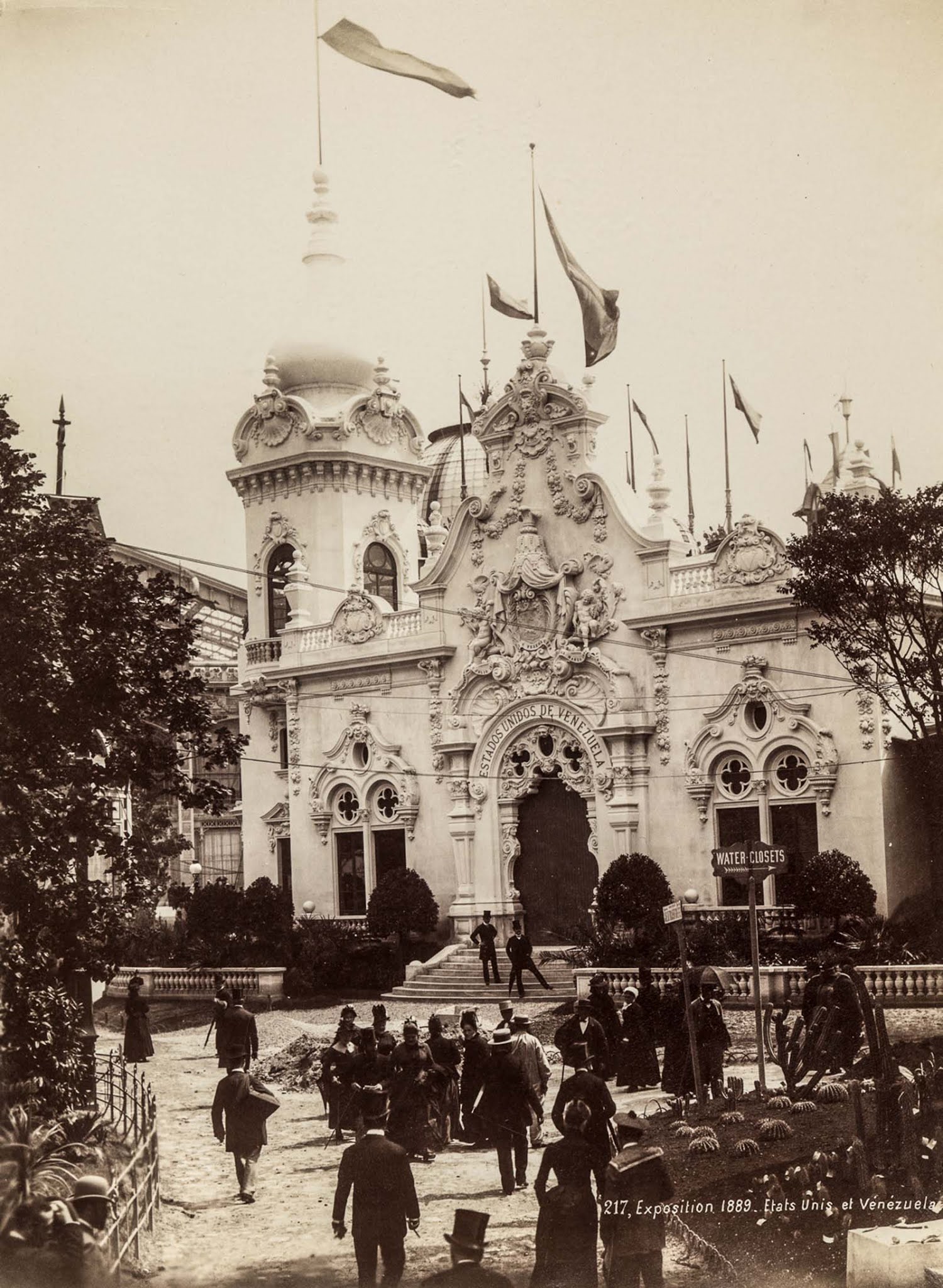
The pavilion of Venezuela.

The pavilion of Chile.
(Photo credit: AALTO University / Brown University Library Center / L’Exposition de Paris, publiée avec la collaboration d’écrivains spéciaux, Vol. 1. Paris : Librairie illustrée, 1889).
Updated on: November 6, 2021
Any factual error or typo? Let us know.
- Aller au contenu principal
- Aller au menu principal
- Aller à la recherche


Le Paris de Gustave Eiffel
26 juillet 2023 - 8 janvier 2024
Cité de l'architecture & du patrimoine
Galerie d'architecture moderne et contemporaine
L’année 2023 célèbre le centenaire de la mort de Gustave Eiffel, illustre ingénieur et entrepreneur, dont le chef d’œuvre, la Tour de trois cents mètres, construite pour l’Exposition universelle de 1889, lui a assuré une renommée universelle.
La Cité de l’architecture et du patrimoine, située au palais de Chaillot, fait face à ce chef-d’œuvre de modernité, symbole de la Ville Lumière et de la France dans le monde. Elle participe à cet évènement en proposant un accrochage inédit consacré au Paris de Gustave Eiffel. Cette exposition met en lumière l’ampleur de l’héritage de Gustave Eiffel dans le paysage parisien à travers une cartographie de ses lieux de vie, de travail et de ses projets pour Paris, souvent méconnus.
Commissariat
Florence Allorent Attachée de conservation, galerie d'architecture moderne et contemporaine, Cité de l'architecture et du patrimoine
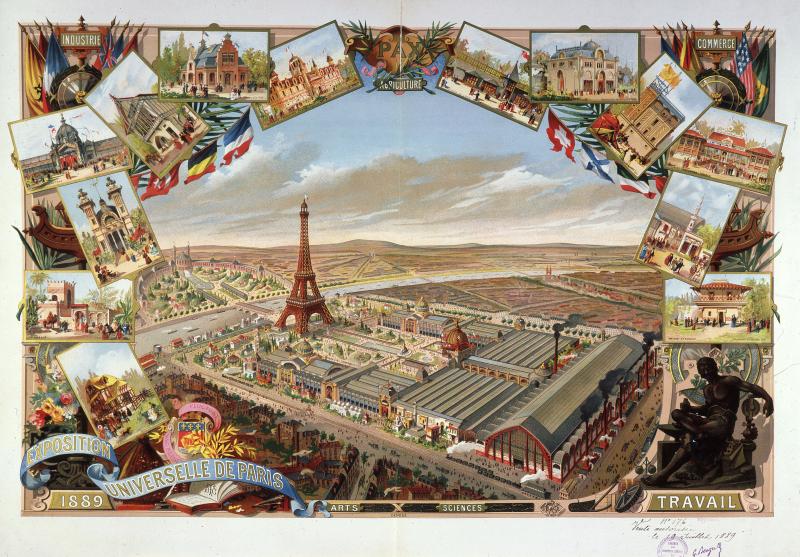
6. Vue générale de l’Exposition universelle de 1889 © CAPA MMF DR
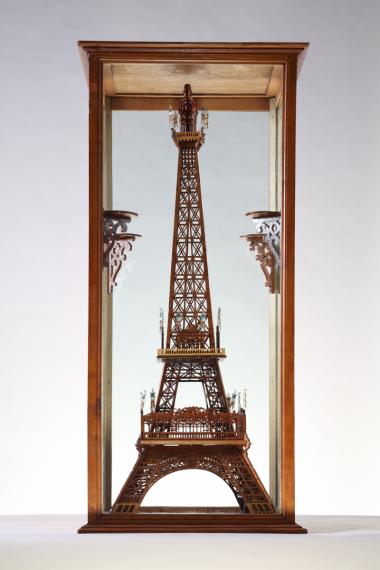
5. Maq. de la tour Eiffel, souvenir luxueux vendu sur la tour lors de l’Exposition universelle de 1889 © CAPA MMF
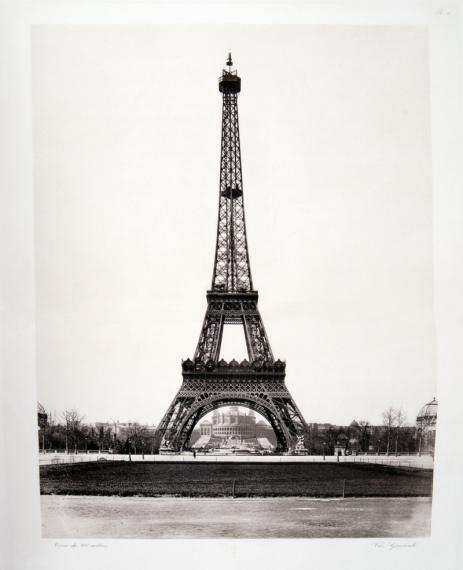
La tour en construction, 1888-1889. Gustave Eiffel, La tour de Trois cents mètres, Paris, Sté des imprimeries Lemercier, 1900
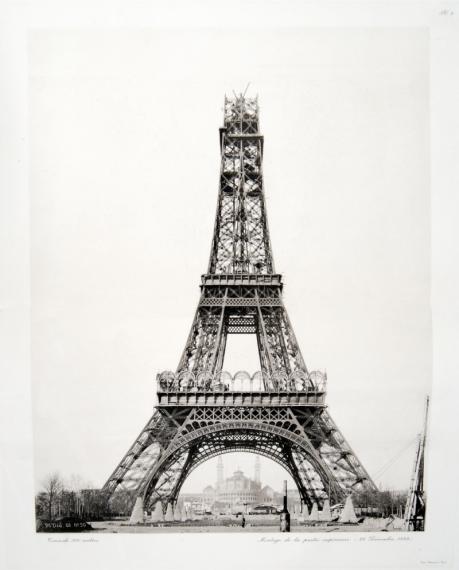
4 4. La tour en construction, 1888-1889. Gustave Eiffel, La tour de Trois cents mètres, Paris, Sté des imprimeries Lemercier, 1900
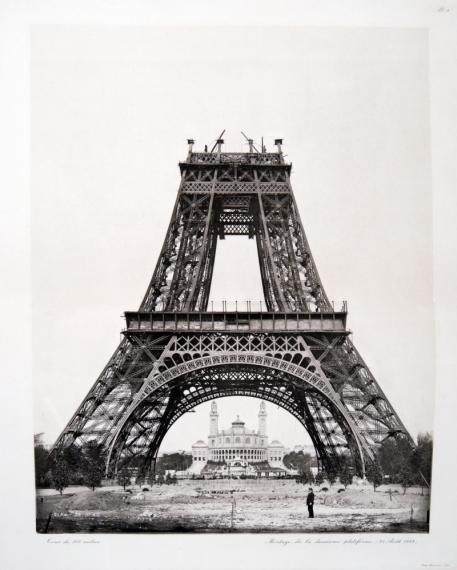
4 2. La tour en construction, 1888-1889. Photo. tirées de Gustave Eiffel, La tour de Trois cents mètres, Paris, Sté des imprimeries Lemercier, 1900
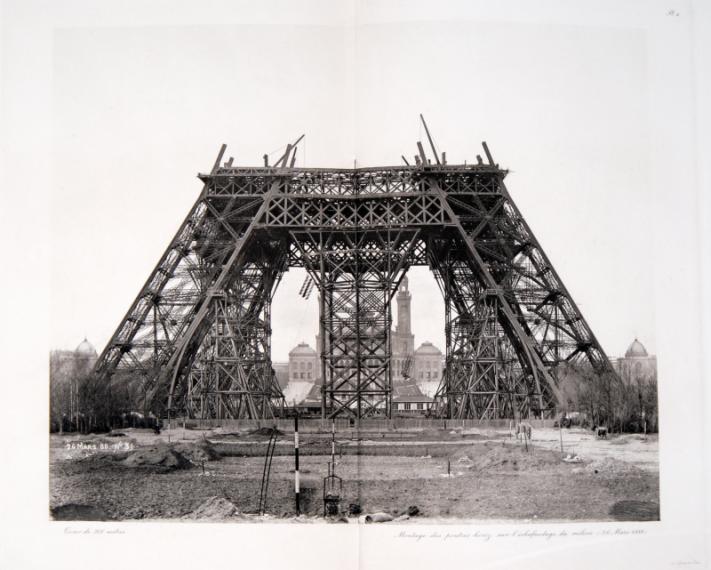
4 1. La tour en construction, 1888-1889. Photo. tirées de Gustave Eiffel, La tour de Trois cents mètres, Paris, Sté des imprimeries Lemercier, 1900
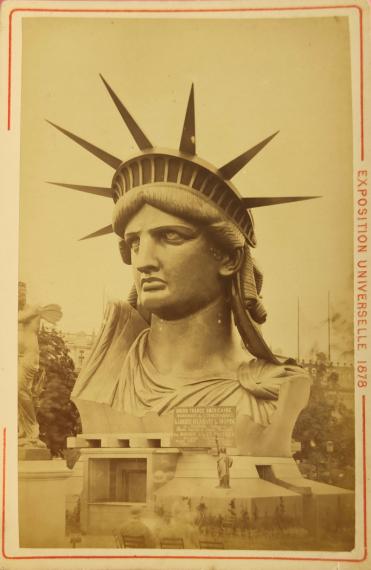
3. Tirage du buste de la statue de la Liberté lors de l’Exposition universelle de 1878, photographie anonyme © CAPAMMFDR
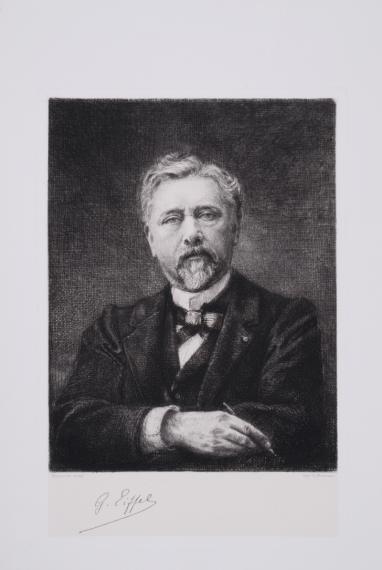
Portrait de Gustave Eiffel extrait de Gustave Eiffel, Société des imp. Lemercier, 1900 © CAPA MMF Bérangère Lomont
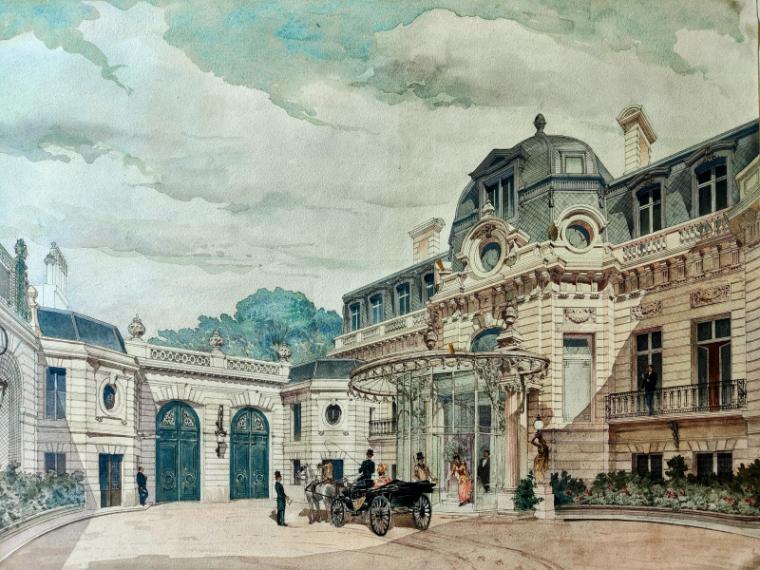
2. Hôtel particulier de Gustave Eiffel, rue Rabelais, Paris 8e. Perspective © Fonds André Granet. CNAM SIAF Cité de l'architecture et du patrimoine
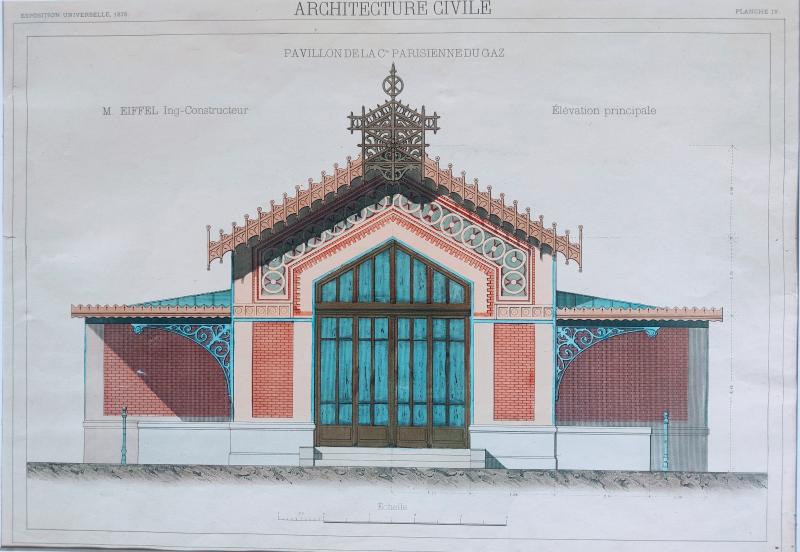
1. Gustave Eiffel, Pavillon de la Compagnie parisienne du gaz pour l'exposition universelle de Paris en 1878, lithographie © CAPA MMF
Informations pratiques
TARIF : 9 € /6 € (accrochage présenté dans les espaces du musée)
Communiqué de presse
CP Le Paris de Gustave Eiffel PDF / 1.51 Mo
Contacts presse
CITÉ DE L’ARCHITECTURE ET DU PATRIMOINE Caroline Loizel 01 58 51 52 82 06 33 89 93 40 [email protected]
AGENCE 14 SEPTEMBRE Laura Sergeant 06 08 75 74 24 [email protected]
The birth of the Eiffel tower
A realized utopia, eiffel tower.
You are at the top of the Eiffel Tower, overlooking Paris at a height of almost 300 m / 1000 feet.
At the opening of the Tower in 1889, this very place was different from what you are seeing.
Le Campanile et le Phare de la tour Eiffel - Les merveilles de l'Exposition 1889 by © Collection tour Eiffel Eiffel Tower
It was used, in particular, as a laboratory to carry out scientific experiments and measurements. Many instruments were installed here such as barometers, anemometers, lightning conductors.
In fact, Gustave Eiffel arranged an office for himself at the very top of the Tower for astronomical and physiological observations. He even installed a weather station.
It was these scientific experiments carried at the Tower which saved it from being destroyed by popular demand. Did you know the Tower should have been pulled down just 20 years after it was erected for the 1889 Exposition Universelle!
Affiche - Chemin de fer Paris-Lyon-Méditerranée - Exposition Universelle 1889 - Paris by © Collection tour Eiffel Eiffel Tower
For the 1889 Universal Exhibition, marking the centenary of the French Revolution, a great competition was announced in the country's Official Gazette.
Universal exhibitions were a technological and industrial showcase for nations, testifying to the achievements made during the industrial revolution.
Le Champ de Mars et l'Ecole Militaire depuis les hauteurs du Trocadéro avant la construction de la tour Eiffel by © Collection tour Eiffel Eiffel Tower
The 1889 competition consisted of "studying the possibility of erecting on the Champ-de-Mars a 300-metre tower with a 125m2 square base".
The Champ-de-Mars and the Military school as seen from the Trocadéro before the construction of the Eiffel Tower.
Selected from among 107 projects, it was that of Gustave Eiffel, an entrepreneur, Maurice Koechlin and Emile Nouguier, both engineers, and Stephen Sauvestre, an architect, that was accepted.
Gustave Eiffel en pied dans l'escalier de la tour Eiffel by © Collection tour Eiffel Eiffel Tower
A brilliant engineer, Gustave Eiffel founded a company specialising in metal structural work.
In this sense the Eiffel Tower was the very height of his career. He devoted the last thirty years of his life to experimental research.
This enthusiast and true genius was able to transcend his own limits to leave us monuments such as the dome on the Nice Observatory, the metal structure of the Statue of Liberty and the Bordeaux railway bridge.
Bureau des Etudes de Gustave Eiffel - La Tour Soleil de Bourdais, projet concurrent de la tour Eiffel (calque à la plume) by © Collection tour Eiffel Eiffel Tower
The competition held at the time of the 1889 Exposition Universelle received several other entries for 300-metre towers.
A serious component was the project of Jules Bourdais, he was the architect of Palais du Trocadéro.
He imagined a tower of 300 m based only of stone.
Dessin projet de MM Eiffel, Nouguier et Koechlin by © Collection tour Eiffel Eiffel Tower
In June 1884, Emile Nouguier and Maurice Koechlin, the two chief engineers in Eiffel's company, came up with the idea of building a very tall tower. It was to be designed like a large pylon.
It would have four columns of latticework girders, separated at the base and coming together at the top, and joined to each other by more metal girders at regular intervals.
Pylône de 300m de hauteur pour la ville de Paris - 1889 - Avant Projet de MM Nouguier et Koechlin by © Collection tour Eiffel Eiffel Tower
The company had by this time perfectly mastered the principle of building bridge supports. The tower project was a bold extension of this principle up to a height of 300 metres - equivalent to the symbolic figure of 1,000 feet.
Reproductions des planches originales de Gustave Eiffel by © Collection tour Eiffel Eiffel Tower
On 18 September 1884, Eiffel registered a patent “for a new configuration allowing the construction of metal supports and pylons capable of exceeding a height of 300 metres”.
Sauvestre proposed stonework pedestals to dress the legs, monumental arches to link the four columns and the first level, large glass-walled halls on each level, a bulb-shaped design for the top and various other ornamental features to decorate the whole of the structure.
The first floor - Copy of Gustave Eiffel's original plates
The second floor - Copy of Gustave Eiffel's original plates
The top - Copy of Gustave Eiffel's original plates
Antennas - Copy of Gustave Eiffel's original plates
The first digging work started on 26 January 1887 and marked the beginning of the Tower's construction.
Conception—Société d'Exploitation de la Tour Eiffel
The Eiffel Tower in 1900
The eiffel tower's inauguration and first visitors, the construction of the eiffel tower.
Paris.fr ne fait aucun suivi publicitaire et ne collecte aucune donnée personnelle . Des cookies sont utilisés à des fins statistiques ou de fonctionnement, ainsi que d'analyse (que vous pouvez refuser ici), nous permettant d'améliorer le site en continu.
- Aller au contenu
- Aller à la navigation
- une information
- une actualité
- une activité
- un évènement
- une démarche

Sur les traces des expositions universelles de Paris (1/2)

Les statues du palais de l'Industrie de 1855 au parc de Saint-Cloud (92)
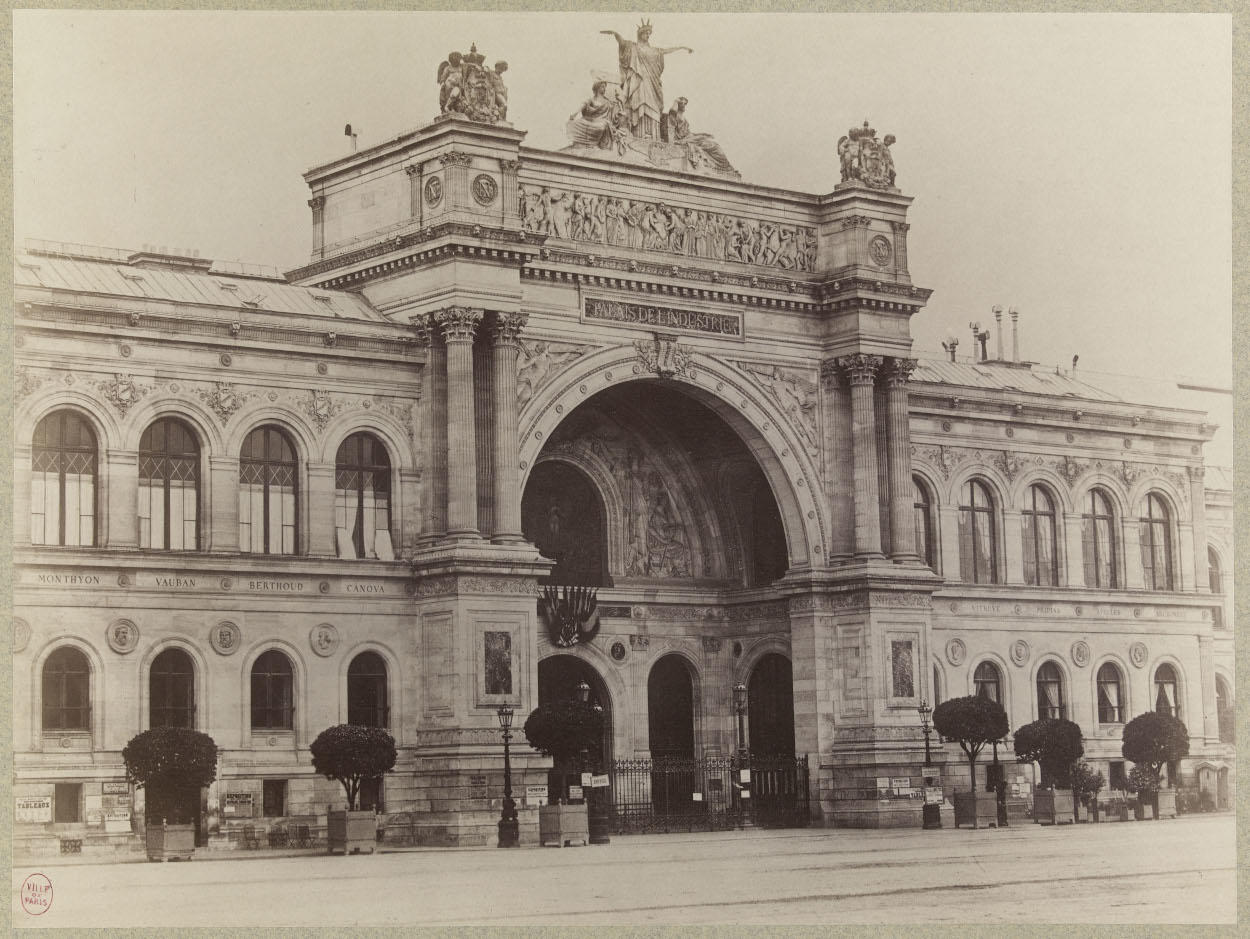
Les Isbas Russes de 1867 dans le 16 e

Cette vidéo est hébergée par youtube.com En l'affichant, vous acceptez ses conditions d'utilisation et les potentiels cookies déposés par ce site.
Vidéo Youtube
Le théâtre de la gaité montparnasse de 1867 dans le 14 e, la tombe d’un poète et délégataire japonais de 1867 au père lachaise.
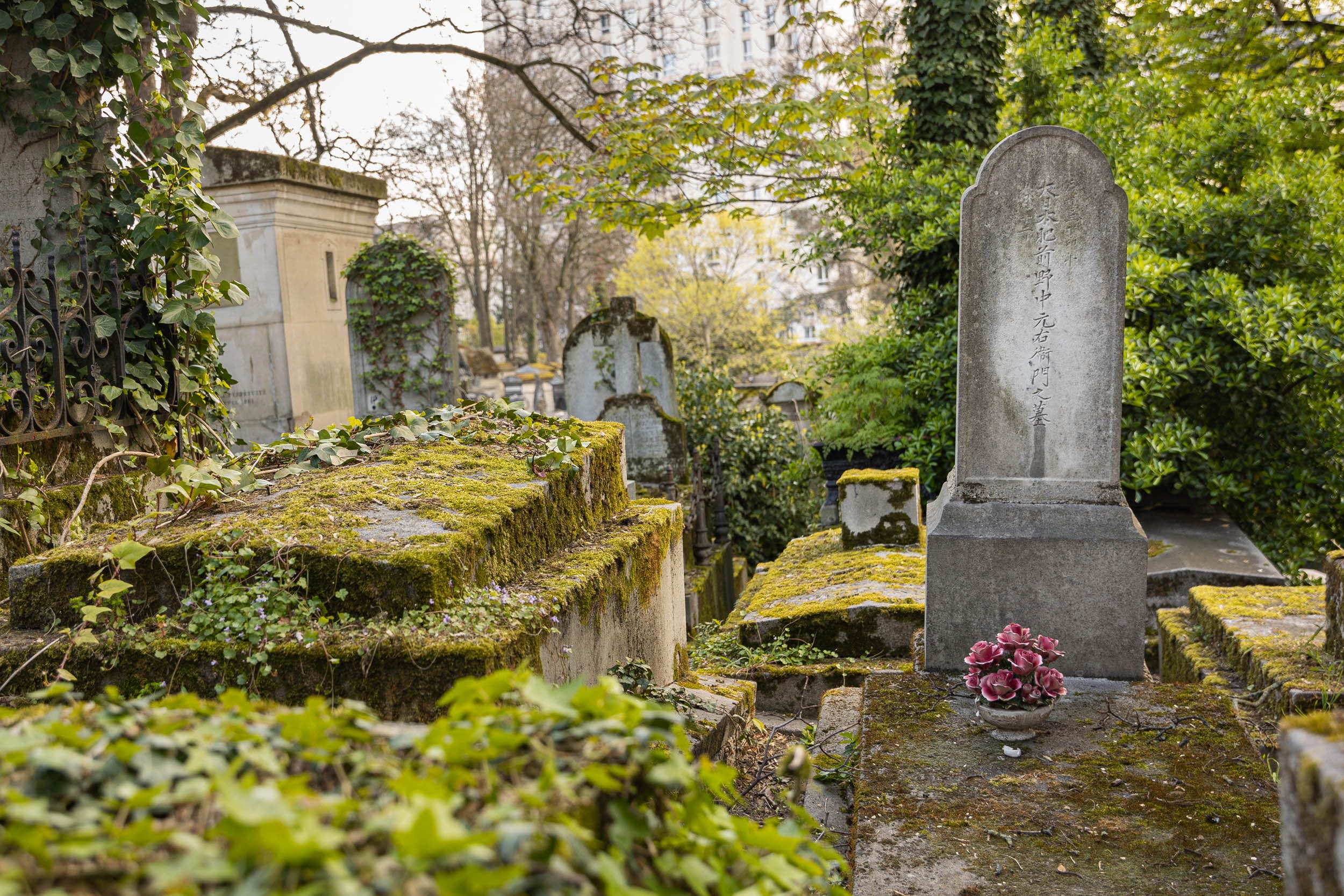
La cité fleurie (13 e ) fabriquée avec des matériaux de 1878
La statue de charlemagne, un bronze de 1878.
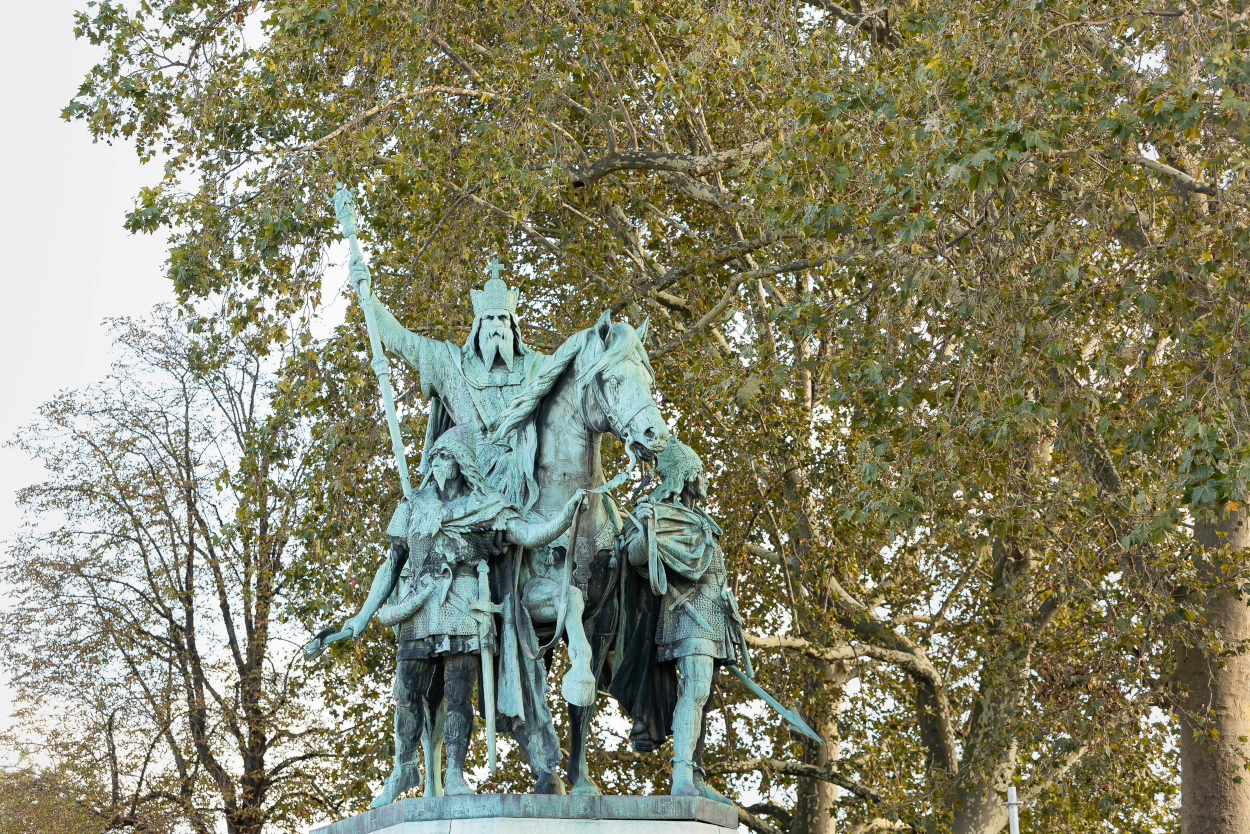
Les statues du musée d’Orsay, ancien décor de 1878
Des cerfs présentés à l'exposition de 1889 au jardin du luxembourg.
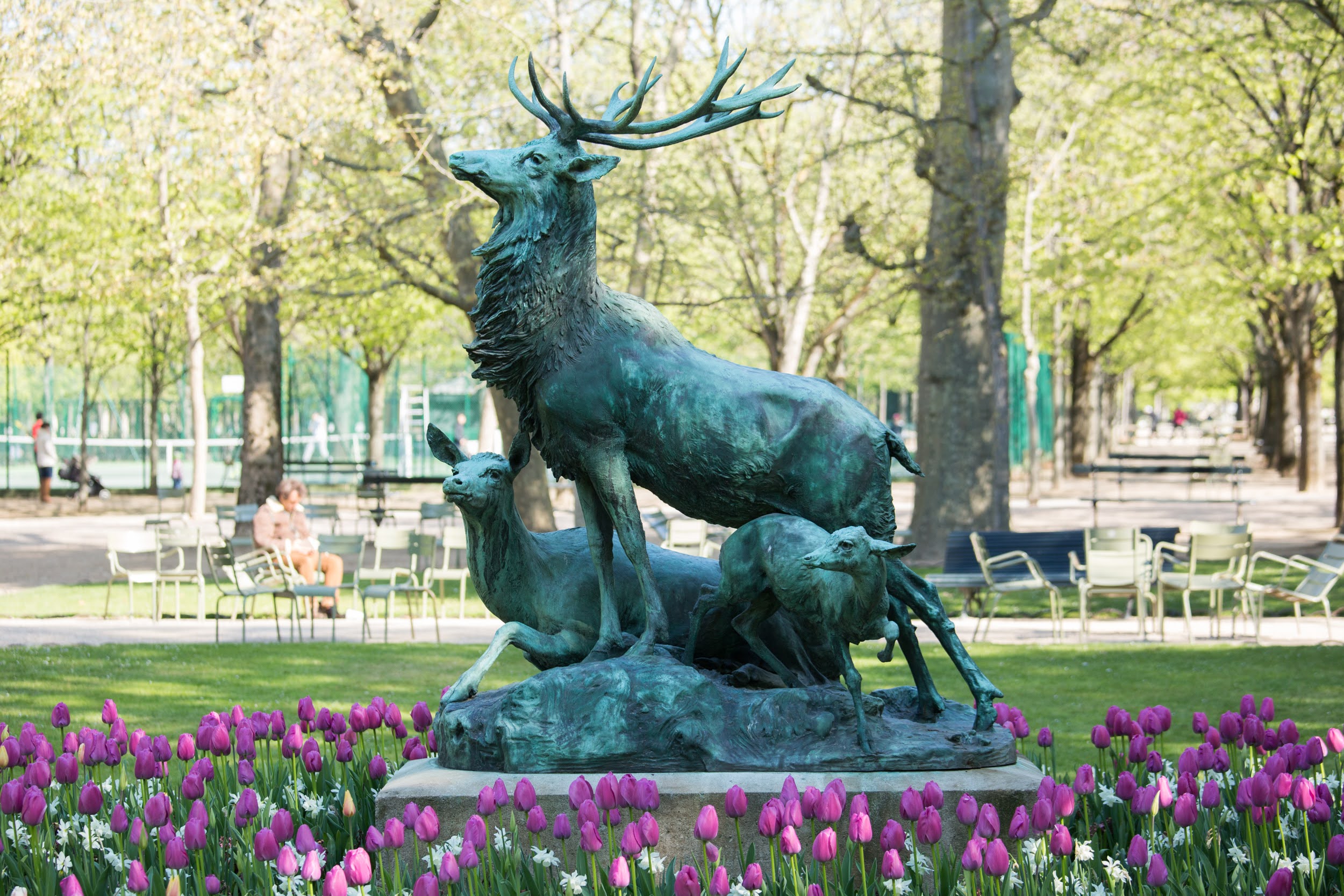
1889, la tour qu’on ne présente plus
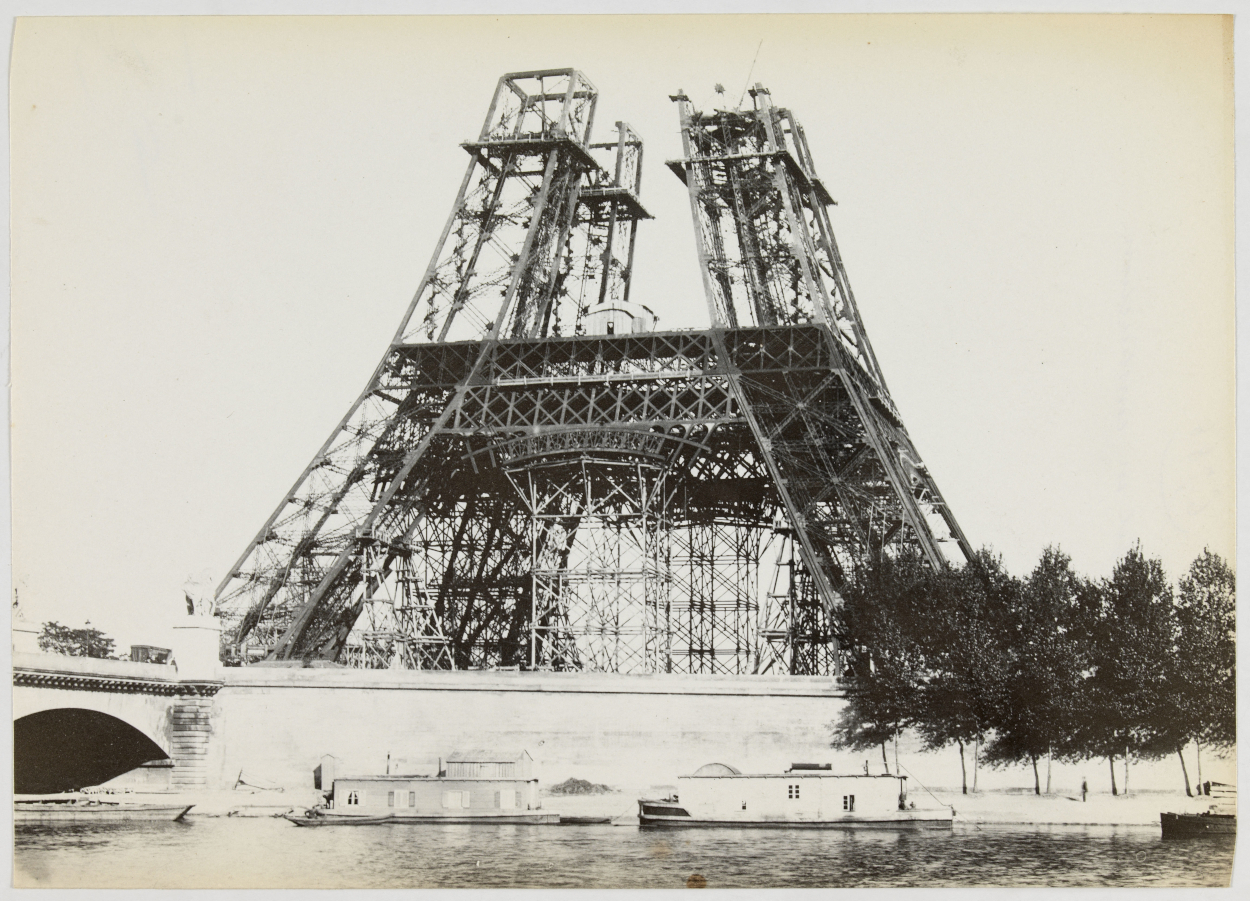
- À lire aussi : les richesses laissées par l’Exposition universelle de 1900, sûrement la plus importante de toutes, et celles de 1937.
We will keep fighting for all libraries - stand with us!
Internet Archive Audio

- This Just In
- Grateful Dead
- Old Time Radio
- 78 RPMs and Cylinder Recordings
- Audio Books & Poetry
- Computers, Technology and Science
- Music, Arts & Culture
- News & Public Affairs
- Spirituality & Religion
- Radio News Archive

- Flickr Commons
- Occupy Wall Street Flickr
- NASA Images
- Solar System Collection
- Ames Research Center

- All Software
- Old School Emulation
- MS-DOS Games
- Historical Software
- Classic PC Games
- Software Library
- Kodi Archive and Support File
- Vintage Software
- CD-ROM Software
- CD-ROM Software Library
- Software Sites
- Tucows Software Library
- Shareware CD-ROMs
- Software Capsules Compilation
- CD-ROM Images
- ZX Spectrum
- DOOM Level CD

- Smithsonian Libraries
- FEDLINK (US)
- Lincoln Collection
- American Libraries
- Canadian Libraries
- Universal Library
- Project Gutenberg
- Children's Library
- Biodiversity Heritage Library
- Books by Language
- Additional Collections

- Prelinger Archives
- Democracy Now!
- Occupy Wall Street
- TV NSA Clip Library
- Animation & Cartoons
- Arts & Music
- Computers & Technology
- Cultural & Academic Films
- Ephemeral Films
- Sports Videos
- Videogame Videos
- Youth Media
Search the history of over 866 billion web pages on the Internet.
Mobile Apps
- Wayback Machine (iOS)
- Wayback Machine (Android)
Browser Extensions
Archive-it subscription.
- Explore the Collections
- Build Collections
Save Page Now
Capture a web page as it appears now for use as a trusted citation in the future.
Please enter a valid web address
- Donate Donate icon An illustration of a heart shape
1889 : la Tour Eiffel et l'Exposition universelle : Musée d'Orsay, 16 mai-15 août 1989
Bookreader item preview, share or embed this item, flag this item for.
- Graphic Violence
- Explicit Sexual Content
- Hate Speech
- Misinformation/Disinformation
- Marketing/Phishing/Advertising
- Misleading/Inaccurate/Missing Metadata
![[WorldCat (this item)] [WorldCat (this item)]](https://archive.org/images/worldcat-small.png)
plus-circle Add Review comment Reviews
120 Previews
2 Favorites
DOWNLOAD OPTIONS
No suitable files to display here.
PDF access not available for this item.
IN COLLECTIONS
Uploaded by station31.cebu on February 7, 2022
SIMILAR ITEMS (based on metadata)
Origins and Construction of the Eiffel Tower
It was for the 1889 Exposition Universelle , the date that marked the 100th anniversary of the French Revolution, that a great competition was launched in 1886.
The first digging work started on the 26th January 1887 . On the 31st March 1889, the Tower had been finished in record time – 2 years, 2 months and 5 days – and was established as a veritable technical feat .
- Une première version bien différente
- La construction
- Durée de construction record
- Le journaliste Émile Goudeau visitant le chantier au début de 1889 en décrit ainsi le spectacle.
- Les planches de Monsieur Eiffel
- Extrait de la "Protestation contre la Tour de M. Eiffel", 1887
Key figures
The construction schedule, the design of the eiffel tower.
The plan to build a tower 300 metres high was conceived as part of preparations for the World's Fair of 1889 .

The wager was to " study the possibility of erecting an iron tower on the Champ-de-Mars with a square base, 125 metres across and 300 metres tall ". Selected from among 107 projects, it was that of Gustave Eiffel, an entrepreneur, Maurice Koechlin and Emile Nouguier, both engineers, and Stephen Sauvestre, an architect, that was accepted.
Emile Nouguier and Maurice Koechlin , the two chief engineers in Eiffel's company, had the idea for a very tall tower in June 1884. It was to be designed like a large pylon with four columns of lattice work girders, separated at the base and coming together at the top , and joined to each other by more metal girders at regular intervals.
The tower project was a bold extension of this principle up to a height of 300 metres - equivalent to the symbolic figure of 1000 feet . On September 18 1884 Eiffel registered a patent "for a new configuration allowing the construction of metal supports and pylons capable of exceeding a height of 300 metres".
In order to make the project more acceptable to public opinion, Nouguier and Koechlin commissioned the architect Stephen Sauvestre to work on the project's appearance.

A quite different first edition
Sauvestre proposed stonework pedestals to dress the legs, monumental arches to link the columns and the first level, large glass-walled halls on each level, a bulb-shaped design for the top and various other ornamental features to decorate the whole of the structure. In the end the project was simplified, but certain elements such as the large arches at the base were retained, which in part give it its very characteristic appearance.
The curvature of the uprights is mathematically determined to offer the most efficient wind resistance possible. As Eiffel himself explains: "All the cutting force of the wind passes into the interior of the leading edge uprights. Lines drawn tangential to each upright with the point of each tangent at the same height, will always intersect at a second point, which is exactly the point through which passes the flow resultant from the action of the wind on that part of the tower support situated above the two points in question. Before coming together at the high pinnacle, the uprights appear to burst out of the ground, and in a way to be shaped by the action of the wind".


The construction
The assembly of the supports began on July 1, 1887 and was completed twenty-two months later.
All the elements were prepared in Eiffel’s factory located at Levallois-Perret on the outskirts of Paris. Each of the 18,000 pieces used to construct the Tower were specifically designed and calculated, traced out to an accuracy of a tenth of a millimetre and then put together forming new pieces around five metres each. A team of constructors, who had worked on the great metal viaduct projects, were responsible for the 150 to 300 workers on site assembling this gigantic erector set.
The rivet workers
All the metal pieces of the tower are held together by rivets, a well-refined method of construction at the time the Tower was constructed. First the pieces were assembled in the factory using bolts , later to be replaced one by one with thermally assembled rivets, which contracted during cooling thus ensuring a very tight fit. A team of four men was needed for each rivet assembled: one to heat it up, another to hold it in place, a third to shape the head and a fourth to beat it with a sledgehammer. Only a third of the 2,500,000 rivets used in the construction of the Tower were inserted directly on site.

The uprights rest on concrete foundations installed a few metres below ground-level on top of a layer of compacted gravel. Each corner edge rests on its own supporting block, applying to it a pressure of 3 to 4 kilograms per square centimetre , and each block is joined to the others by walls.
On the Seine side of the construction, the builders used watertight metal caissons and injected compressed air , so that they were able to work below the level of the water.

The tower was assembled using wooden scaffolding and small steam cranes mounted onto the tower itself.
The assembly of the first level was achieved by the use of twelve temporary wooden scaffolds, 30 metres high, and four larger scaffolds of 40 metres each.
"Sand boxes" and hydraulic jacks - replaced after use by permanent wedges - allowed the metal girders to be positioned to an accuracy of one millimetre.
On December 7, 1887 , the joining of the major girders up to the first level was completed. The pieces were hauled up by steam cranes, which themselves climbed up the Tower as they went along using the runners to be used for the Tower's lifts.
months to build the foundations
It only took five months to build the foundations and twenty-one to finish assembling the metal pieces of the Tower.
Considering the rudimentary means available at that period, this could be considered record speed. The assembly of the Tower was a marvel of precision , as all chroniclers of the period agree. The construction work began in January 1887 and was finished on March 31, 1889 . On the narrow platform at the top, Eiffel received his decoration from the Legion of Honour.
"A thick cloud of tar and coal smoke seized the throat , and we were deafened by the din of metal screaming beneath the hammer. Over there they were still working on the bolts: workmen with their iron bludgeons, perched on a ledge just a few centimetres wide, took turns at striking the bolts (these in fact were the rivets). One could have taken them for blacksmiths contentedly beating out a rhythm on an anvil in some village forge, except that these smiths were not striking up and down vertically, but horizontally, and as with each blow came a shower of sparks , these black figures, appearing larger than life against the background of the open sky, looked as if they were reaping lightning bolts in the clouds. "
Mr. Eiffel’s Blueprints
The following blueprints are copies of Gustave Eiffel’s originals, taken from the book La Tour de 300 mètres, Ed. Lemercier, Paris 1900

Debate and controversy surrounding the Eiffel Tower
Even before the end of its construction, the Tower was already at the heart of much debate. Enveloped in criticism from the biggest names in the world of Art and Literature, the Tower managed to stand its ground and achieve the success it deserved.

Various pamphlets and articles were published throughout the year of 1886, le 14 février 1887, la protestation des Artistes.
The "Protest against the Tower of Monsieur Eiffel", published in the newspaper Le Temps , is addressed to the World's Fair's director of works, Monsieur Alphand. It is signed by several big names from the world of literature and the arts : Charles Gounod, Guy de Maupassant, Alexandre Dumas junior, François Coppée, Leconte de Lisle, Sully Prudhomme, William Bouguereau, Ernest Meissonier, Victorien Sardou, Charles Garnier and others to whom posterity has been less kind.

Other satirists pushed the violent diatribe even further, hurling insults like : "this truly tragic street lamp" (Léon Bloy), "this belfry skeleton" (Paul Verlaine), "this mast of iron gymnasium apparatus, incomplete, confused and deformed" (François Coppée), "this high and skinny pyramid of iron ladders, this giant ungainly skeleton upon a base that looks built to carry a colossal monument of Cyclops, but which just peters out into a ridiculous thin shape like a factory chimney" (Maupassant), "a half-built factory pipe, a carcass waiting to be fleshed out with freestone or brick, a funnel-shaped grill, a hole-riddled suppository" (Joris-Karl Huysmans).

Once the Tower was finished the criticism burnt itself out in the presence of the completed masterpiece, and in the light of the enormous popular success with which it was greeted. It received two million visitors during the World's Fair of 1889.
" We come, we writers, painters, sculptors, architects, lovers of the beauty of Paris which was until now intact, to protest with all our strength and all our indignation, in the name of the underestimated taste of the French, in the name of French art and history under threat, against the erection in the very heart of our capital, of the useless and monstrous Eiffel Tower which popular ill-feeling, so often an arbiter of good sense and justice, has already christened the Tower of Babel. (...)
Is the City of Paris any longer to associate itself with the baroque and mercantile fancies of a builder of machines, thereby making itself irreparably ugly and bringing dishonour ? (...). To comprehend what we are arguing one only needs to imagine for a moment a tower of ridiculous vertiginous height dominating Paris,just like a gigantic black factory chimney, its barbarous mass overwhelming and humiliating all our monuments and belittling our works of architecture, which will just disappear before this stupefying folly.
And for twenty years we shall see spreading across the whole city, a city shimmering with the genius of so many centuries, we shall see spreading like an ink stain, the odious shadow of this odious column of bolted metal.
Gustave Eiffel’s Response
In an interview in the newspaper Le Temps of February 14 1887, Eiffel gave a reply to the artists' protest, neatly summing up his artistic doctrine:
"For my part I believe that the Tower will possess its own beauty . Are we to believe that because one is an engineer, one is not preoccupied by beauty in one's constructions, or that one does not seek to create elegance as well as solidity and durability ? Is it not true that the very conditions which give strength also conform to the hidden rules of harmony ? (...) Now to what phenomenon did I have to give primary concern in designing the Tower ? It was wind resistance.
Well then ! I hold that the curvature of the monument's four outer edges, which is as mathematical calculation dictated it should be (...) will give a great impression of strength and beauty , for it will reveal to the eyes of the observer the boldness of the design as a whole. Likewise the many empty spaces built into the very elements of construction will clearly display the constant concern not to submit any unnecessary surfaces to the violent action of hurricanes, which could threaten the stability of the edifice. Moreover there is an attraction in the colossal, and a singular delight to which ordinary theories of art are scarcely applicable ".
- Partager sur X
On the same theme

Gustave Eiffel
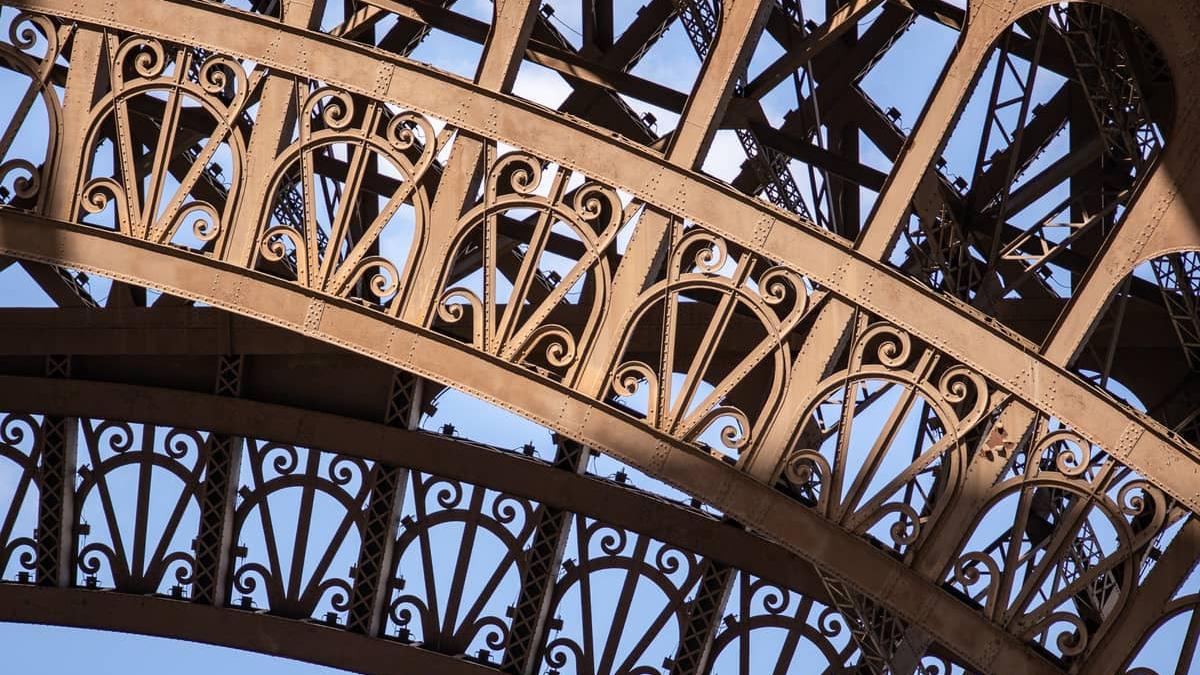
Eiffel tower facts, height & weight
An object of discord, desire and fascination, the Eiffel Tower never fails to impress. Enriched by a history full of new developments, here you can discover all of its key information.

History of the restaurants
For the Universal Exhibition of 1889, four majestic wooden pavilions designed by Stephen Sauvestre decked the platform on the first floor. Each restaurant could seat 500 people.
- Prices & Times
- Haut de page
THE BEST Elektrostal Things to Do with Kids
Things to do in elektrostal with kids.
- Good for Kids
- Good for Big Groups
- Adventurous
- Budget-friendly
- Good for a Rainy Day
- Hidden Gems
- Good for Couples
- Honeymoon spot
- Good for Adrenaline Seekers
- Things to do ranked using Tripadvisor data including reviews, ratings, photos, and popularity.

1. Park of Culture and Leisure

- Bahasa Indonesia
- Eastern Europe
- Moscow Oblast
Elektrostal
Elektrostal Localisation : Country Russia , Oblast Moscow Oblast . Available Information : Geographical coordinates , Population, Area, Altitude, Weather and Hotel . Nearby cities and villages : Noginsk , Pavlovsky Posad and Staraya Kupavna .
Information
Find all the information of Elektrostal or click on the section of your choice in the left menu.
- Update data
Elektrostal Demography
Information on the people and the population of Elektrostal.
Elektrostal Geography
Geographic Information regarding City of Elektrostal .
Elektrostal Distance
Distance (in kilometers) between Elektrostal and the biggest cities of Russia.
Elektrostal Map
Locate simply the city of Elektrostal through the card, map and satellite image of the city.
Elektrostal Nearby cities and villages
Elektrostal weather.
Weather forecast for the next coming days and current time of Elektrostal.
Elektrostal Sunrise and sunset
Find below the times of sunrise and sunset calculated 7 days to Elektrostal.
Elektrostal Hotel
Our team has selected for you a list of hotel in Elektrostal classified by value for money. Book your hotel room at the best price.
Elektrostal Nearby
Below is a list of activities and point of interest in Elektrostal and its surroundings.
Elektrostal Page

- Information /Russian-Federation--Moscow-Oblast--Elektrostal#info
- Demography /Russian-Federation--Moscow-Oblast--Elektrostal#demo
- Geography /Russian-Federation--Moscow-Oblast--Elektrostal#geo
- Distance /Russian-Federation--Moscow-Oblast--Elektrostal#dist1
- Map /Russian-Federation--Moscow-Oblast--Elektrostal#map
- Nearby cities and villages /Russian-Federation--Moscow-Oblast--Elektrostal#dist2
- Weather /Russian-Federation--Moscow-Oblast--Elektrostal#weather
- Sunrise and sunset /Russian-Federation--Moscow-Oblast--Elektrostal#sun
- Hotel /Russian-Federation--Moscow-Oblast--Elektrostal#hotel
- Nearby /Russian-Federation--Moscow-Oblast--Elektrostal#around
- Page /Russian-Federation--Moscow-Oblast--Elektrostal#page
- Terms of Use
- Copyright © 2024 DB-City - All rights reserved
- Change Ad Consent Do not sell my data

Current time by city
For example, New York
Current time by country
For example, Japan
Time difference
For example, London
For example, Dubai
Coordinates
For example, Hong Kong
For example, Delhi
For example, Sydney
Geographic coordinates of Elektrostal, Moscow Oblast, Russia
City coordinates
Coordinates of Elektrostal in decimal degrees
Coordinates of elektrostal in degrees and decimal minutes, utm coordinates of elektrostal, geographic coordinate systems.
WGS 84 coordinate reference system is the latest revision of the World Geodetic System, which is used in mapping and navigation, including GPS satellite navigation system (the Global Positioning System).
Geographic coordinates (latitude and longitude) define a position on the Earth’s surface. Coordinates are angular units. The canonical form of latitude and longitude representation uses degrees (°), minutes (′), and seconds (″). GPS systems widely use coordinates in degrees and decimal minutes, or in decimal degrees.
Latitude varies from −90° to 90°. The latitude of the Equator is 0°; the latitude of the South Pole is −90°; the latitude of the North Pole is 90°. Positive latitude values correspond to the geographic locations north of the Equator (abbrev. N). Negative latitude values correspond to the geographic locations south of the Equator (abbrev. S).
Longitude is counted from the prime meridian ( IERS Reference Meridian for WGS 84) and varies from −180° to 180°. Positive longitude values correspond to the geographic locations east of the prime meridian (abbrev. E). Negative longitude values correspond to the geographic locations west of the prime meridian (abbrev. W).
UTM or Universal Transverse Mercator coordinate system divides the Earth’s surface into 60 longitudinal zones. The coordinates of a location within each zone are defined as a planar coordinate pair related to the intersection of the equator and the zone’s central meridian, and measured in meters.
Elevation above sea level is a measure of a geographic location’s height. We are using the global digital elevation model GTOPO30 .
Elektrostal , Moscow Oblast, Russia

IMAGES
COMMENTS
La tour Eiffel pendant l'exposition universelle. La dixième exposition universelle est organisée à Paris en 1889, du 15 mai au 6 novembre, et c'est pour cette occasion que la tour Eiffel est construite. Etendue sur 95 hectares, l'Exposition occupe le Champ de Mars, la colline du Trocadéro et les quais jusqu'à l'esplanade des ...
The Exposition Universelle of 1889 (French pronunciation: [ɛkspozisjɔ̃ ynivɛʁsɛl]), better known in English as the 1889 Paris Exposition, was a world's fair held in Paris, France, from 6 May to 31 October 1889.It was the fifth of ten major expositions held in the city between 1855 and 1937. It attracted more than thirty-two million visitors. The most famous structure created for the ...
Vue générale. L' Exposition universelle de 1889 est la dixième Exposition universelle organisée. Elle se tient à Paris du 5 mai au 31 octobre 1889. Son thème est la Révolution française, dans le cadre du centenaire de cet événement. C'est à l'occasion de cette Exposition commémorative que la tour Eiffel est construite.
La tour Eiffel [tuʁɛfɛl] Écouter est une tour de fer puddlé de 330 m [3] de hauteur (avec antennes) située à Paris, à l'extrémité nord-ouest du parc du Champ-de-Mars en bordure de la Seine dans le 7 e arrondissement.Son adresse officielle est 5, avenue Anatole-France. Construite en deux ans par Gustave Eiffel et ses collaborateurs pour l'Exposition universelle de Paris de 1889 ...
The Exposition Universelle of 1900 (French pronunciation: [ɛkspozisjɔ̃ ynivɛʁsɛl]), better known in English as the 1900 Paris Exposition, was a world's fair held in Paris, France, from 14 April to 12 November 1900, to celebrate the achievements of the past century and to accelerate development into the next.It was the sixth of ten major expositions held in the city between 1855 and 1937.
It attracted more than thirty-two million visitors. The most famous structure created for the Exposition, and still remaining, is the Eiffel Tower. The 1889 Paris Exposition Universelle covered a total area of 0.96 km2, including the Champ de Mars, the Trocadéro, the quai d'Orsay, a part of the Seine, and the Invalides esplanade.
Le Paris de Gustave Eiffel. L'année 2023 célèbre le centenaire de la mort de Gustave Eiffel, illustre ingénieur et entrepreneur, dont le chef d'œuvre, la Tour de trois cents mètres, construite pour l'Exposition universelle de 1889, lui a assuré une renommée universelle. La Cité de l'architecture et du patrimoine, située au ...
Exposition Universelle de 1889 Paris, May 6-November 6, 1889. Eiffel Tower (Tour de 300 mètres) Gustave Eiffel, designer; Stephen Sauvestre, architect; Maurice Koechlin and Emile Nouguier, engineers The Eiffel Tower is the only surviving structure from the 1889 exposition. This view was taken from the Palais du Trocadéro.
In 1900, when the Eiffel Tower celebrated its 11th anniversary, it was no longer really a novelty. But the World's Fair held in Paris that year provided the perfect opportunity to modernise the monument, and make it the City of Light's main attraction once again. Exposition universelle de 1900, Paris.
La première Exposition universelle des produits de l'industrie (de Paris) se tient, par Décret impérial du 8 mars 1853, sur les Champs-Élysées du 15 mai au 31 octobre 1855 . L'exposition organisée sous la présidence de la commission impériale du prince Napoléon et d'Arlès-Dufour, réunira 23 954 exposants au total.
The birth of the Eiffel tower. You are at the top of the Eiffel Tower, overlooking Paris at a height of almost 300 m / 1000 feet. At the opening of the Tower in 1889, this very place was different from what you are seeing. It was used, in particular, as a laboratory to carry out scientific experiments and measurements.
Mise à jour le 13/10/2021. Entre 1855 et 1937, Paris a accueilli six expositions universelles. On en observe encore les traces aux quatre coins de la capitale. Découvrez celles laissées par les quatre premières expositions. 1855 c'est l'effervescence, la France organise sa toute première exposition universelle à Paris.
1889 : la Tour Eiffel et l'Exposition universelle : Musée d'Orsay, 16 mai-15 août 1989 ... Publication date 1989 Topics Exposition universelle de 1889 (Paris, France), Tour Eiffel (Paris, France) Publisher Paris : Editions de la Réunion des Musées nationaux : Ministère de la culture, de la communication, des grands travaux et du ...
Elektrostal , lit: Electric and Сталь , lit: Steel) is a city in Moscow Oblast, Russia, located 58 kilometers east of Moscow. Population: 155,196 ; 146,294 ...
Origins and Construction of the Eiffel Tower. It was for the 1889 Exposition Universelle, the date that marked the 100th anniversary of the French Revolution, that a great competition was launched in 1886. The first digging work started on the 26th January 1887. On the 31st March 1889, the Tower had been finished in record time - 2 years, 2 ...
1. Park of Culture and Leisure. 16. Parks. Fun Things to Do in Elektrostal with Kids: Family-friendly activities and fun things to do. See Tripadvisor's 796 traveler reviews and photos of kid friendly Elektrostal attractions.
Elektrostal Geography. Geographic Information regarding City of Elektrostal. Elektrostal Geographical coordinates. Latitude: 55.8, Longitude: 38.45. 55° 48′ 0″ North, 38° 27′ 0″ East. Elektrostal Area. 4,951 hectares. 49.51 km² (19.12 sq mi) Elektrostal Altitude.
Geographic coordinates of Elektrostal, Moscow Oblast, Russia in WGS 84 coordinate system which is a standard in cartography, geodesy, and navigation, including Global Positioning System (GPS). Latitude of Elektrostal, longitude of Elektrostal, elevation above sea level of Elektrostal.